Patrick Smith - An Interview
Patrick Smith - Conversations with Creatives
Quick Summary
Conversations with Creatives is an ongoing interview series between myself and those that truly inspire me. This is a space for me to dig deeper into their creative journey and process to uncover more about what led them here, what pushes them forward and what they hope to achieve.
Interview #3 - Patrick Smith
Patrick Smith is a Welsh-German film photographer based in Schwerin, Germany.
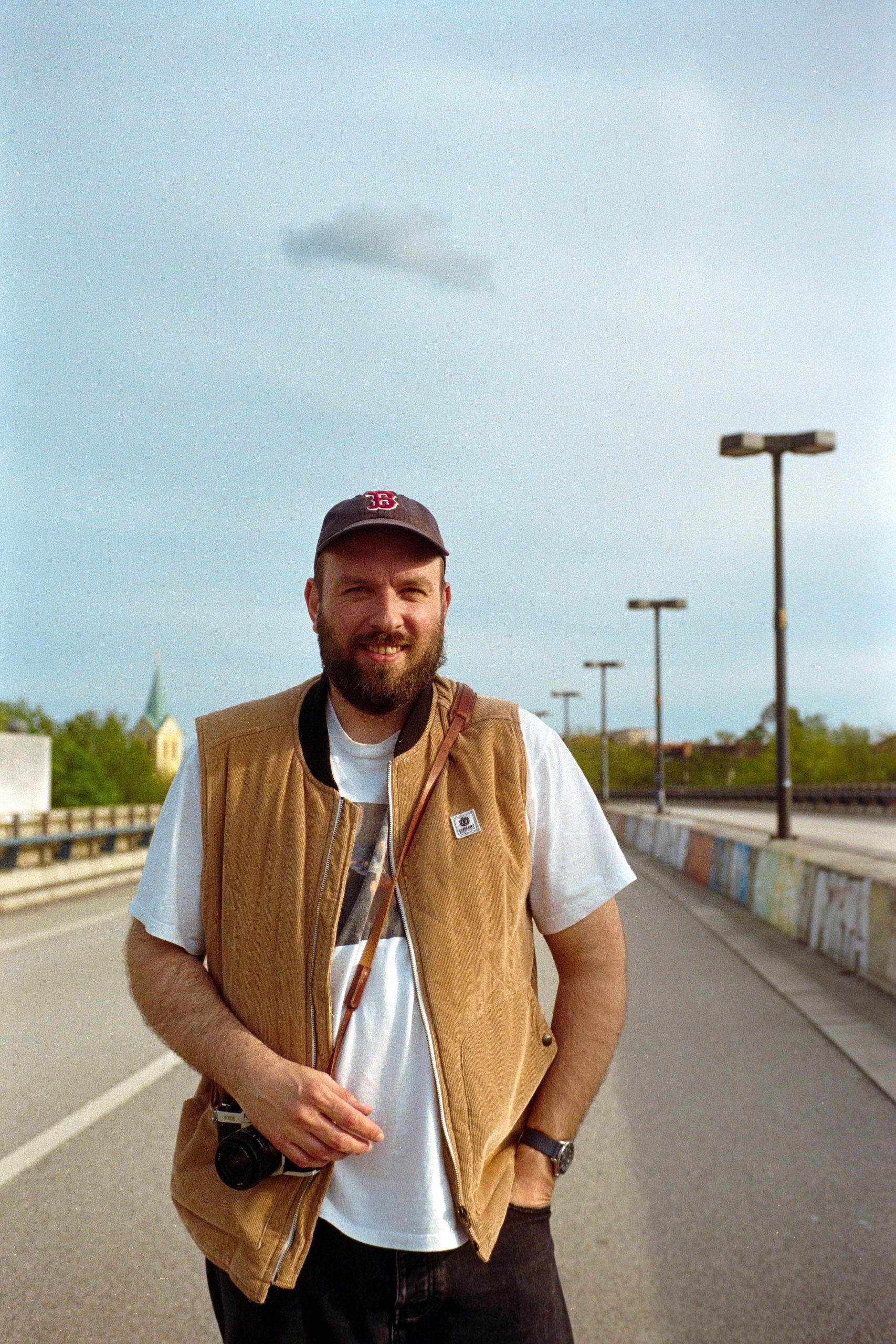
Patrick’s creative journey spans continents and contrasting lifestyles; early experiments with photography evolved into a deep commitment to film, a medium he believes uniquely captures the nuances of light and emotion that digital often misses.
After spending 14 vibrant years in Berlin, immersed in one of Europe’s most dynamic and exciting creative scenes, Patrick relocated to the charming town of Schwerin in northern Germany.
We explore this this transition, from the bustling energy of Berlin to a slower, more reflective pace of life, and how this has influenced his approach to photography. His work documents the delicate interplay between environment and humanity, drawing on experiences from both urban landscapes and serene, natural settings.
In this interview, we cover Patrick’s early days experimenting with digital and film, his formative years shaped by the diverse influences of Berlin, and how his recent move has spurred a renewed focus on capturing the quiet beauty of nature. Join us as we delve into the inspirations, challenges, and creative processes that continue to define his work.
1 - Creative Foundations
Can you tell me about your journey into photography? Was it always film photography, or did you start with digital?
I have always liked taking pictures, even as a kid using cheap film cameras. I started getting serious about photography during university. At first, it was all about digital cameras—my first serious digital camera was a Nikon DSLR, eventually leading to a Fuji X100V. Over the following years, my interest evolved, and as I got more into photography, I also started diving deeper into film photography around 2018–2019. Now, my photography is about 99% film and 1% digital.
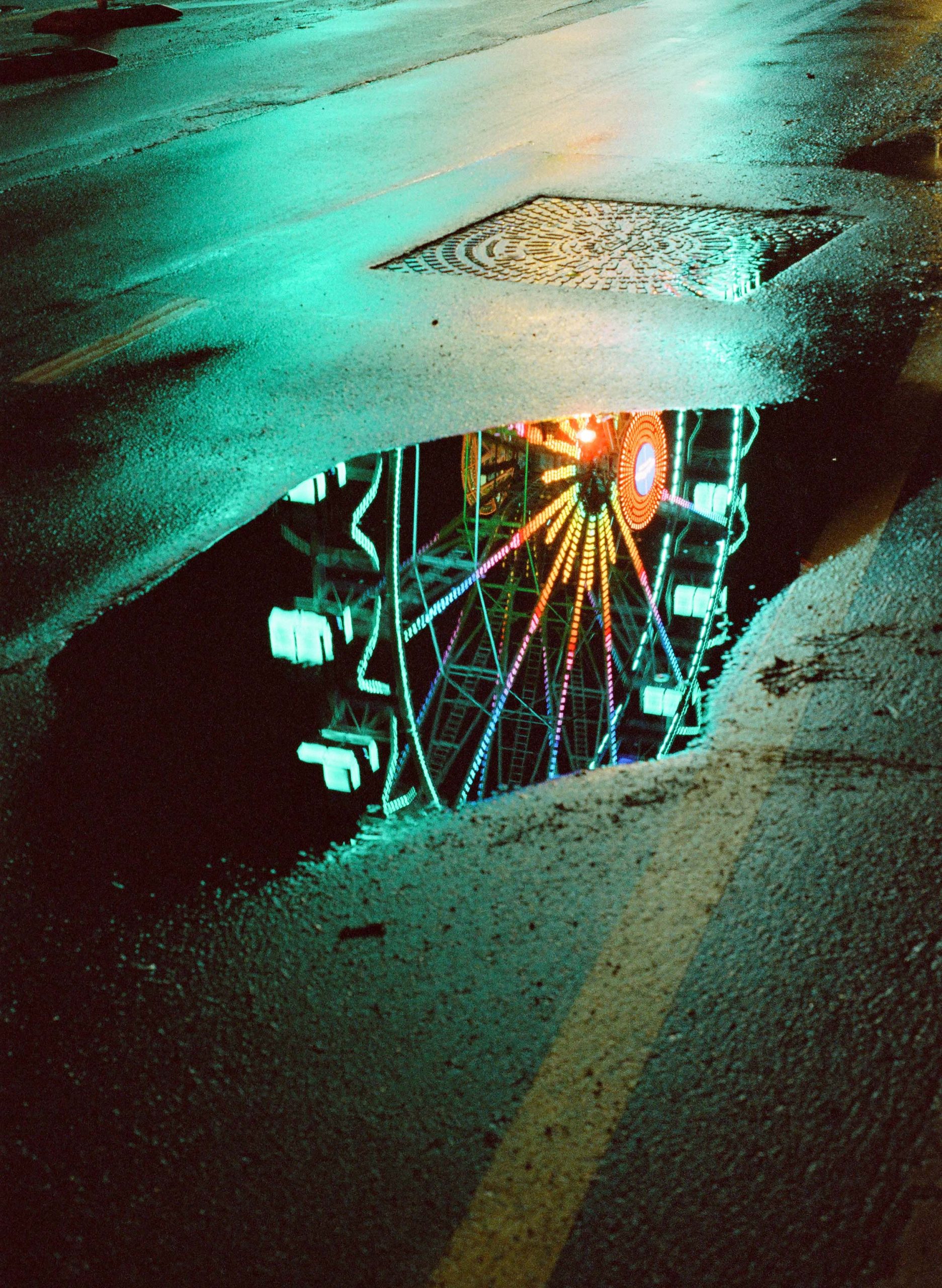
What first drew you to film photography, and what about it keeps you captivated?
I have always found film photography fascinating. What tipped the scales and made me dive into it was a trip to the U.S. with my best mate in 2019.
My friend was using a Nikon F3 while I was shooting digital. During the trip, I loved watching the slower, more deliberate approach to taking pictures on film and the entire creative process.
It made me decide to give it a serious try myself. Upon returning to Germany, I bought a Minolta XD7 with a 50mm lens, got totally hooked, and haven’t looked back since
How has your dual heritage as Welsh-German influenced your creative perspective and the way you see the world through your lens?
I’m not sure that my dual heritage has greatly influenced my photography. However, I feel very blessed to have had the opportunity to grow up and live in both countries and to call such a beautiful place as Wales my second home.
I’m also grateful that I can return to Wales as often as I like to photograph its stunning countryside and the people who live there.
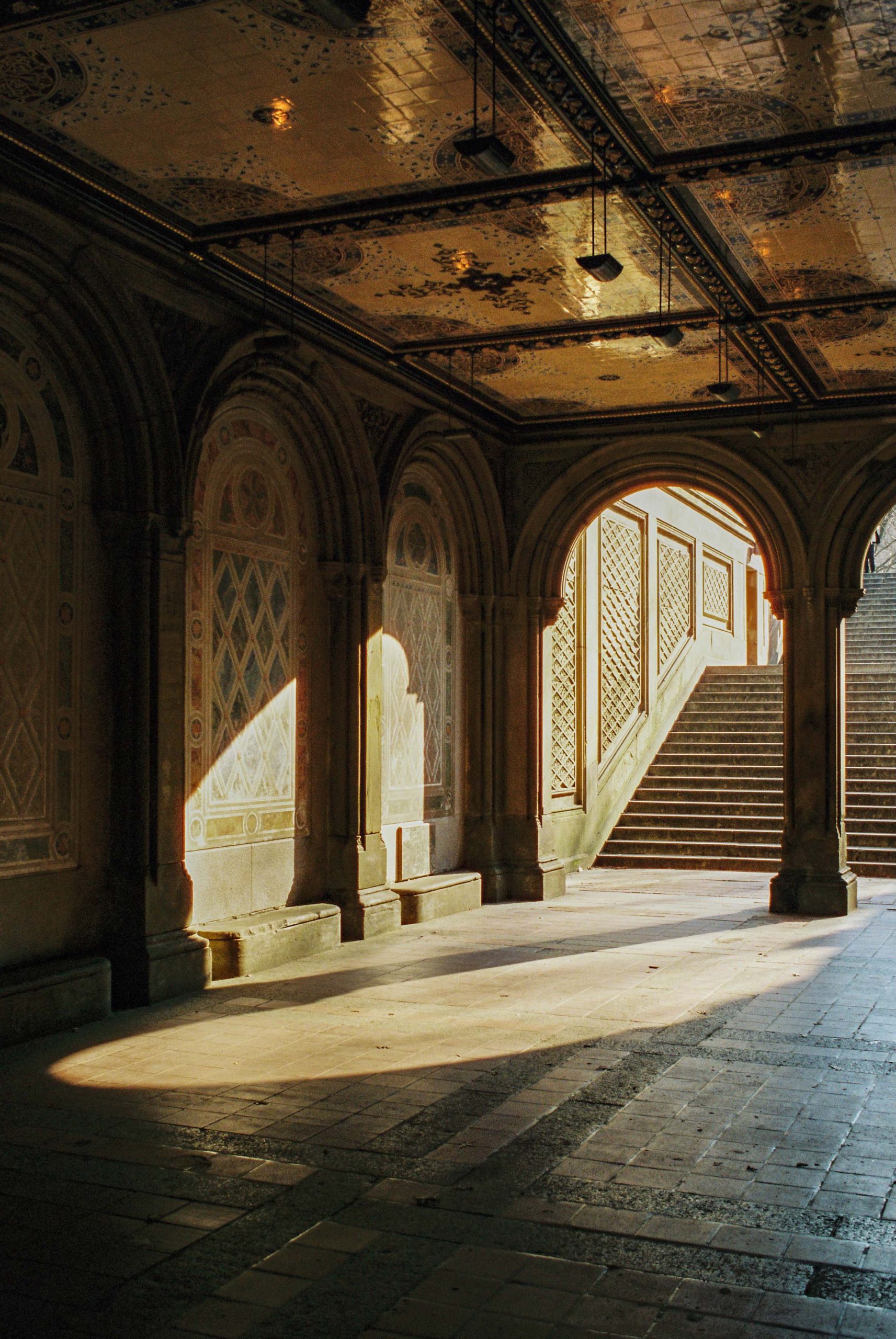
2 - On the Move
Berlin is often regarded as one of the most creative cities in Europe. How did your time there shape your approach to photography and creativity in general?
Berlin has had a huge impact on my photography and creativity. It’s such a fantastic city with so much to see, and there’s always something happening.
Because of its history and diversity, there are countless interesting photo spots, and you can constantly explore new areas. The city’s diversity offers endless potential for different photographic styles, helping me develop and evolve my own.
I really love Berlin for this.
If you enjoy shooting urban scenes or street photography, it’s like a giant creative playground. Plus, there’s a thriving community of photographers and other creatives, making it easy to connect with like-minded people and find inspiration.
The whole photography scene—especially the film photography scene—is amazing, and I loved attending meetups and photo walks.
On top of that, Berlin has so many photo galleries and exhibitions happening all the time, which are a constant source of inspiration.
Are there any specific places, people, or moments in Berlin that particularly stand out as formative for your work?
I think the entire city was formative for my work. I lived there for 14 years, and it inspired me every single day. If I had to name one factor that stood out, it would be urban night photography.
Berlin has so many incredible locations, both above and underground. If I hadn’t lived there, I don’t think I would have become so addicted to this style of photography.
I also have to mention the film photography scene again—there are so many talented people who continue to inspire me and influence my work.
How has your photography evolved since moving to Schwerin? Do you find the slower pace or different surroundings affecting your creative process?
I only moved here last June for a new job and to be closer to the German side of my family, who live in northern Germany, after my daughter was born. So right now, I’m still in the process of settling into a new environment.
Since moving, I’ve been shooting more landscapes and nature scenes, as well as a lot more black and white photography, which I’m really enjoying.
There are so many beautiful lakes here, and it’s so close to the Baltic Sea. The slower pace of life is also giving me more time to think about compositions and the overall process of shooting film.
In Berlin, with so much happening, it was easy to overshoot certain places or scenes. I’m also really enjoying exploring and discovering new scenes, subjects, and locations to shoot in and around Schwerin.
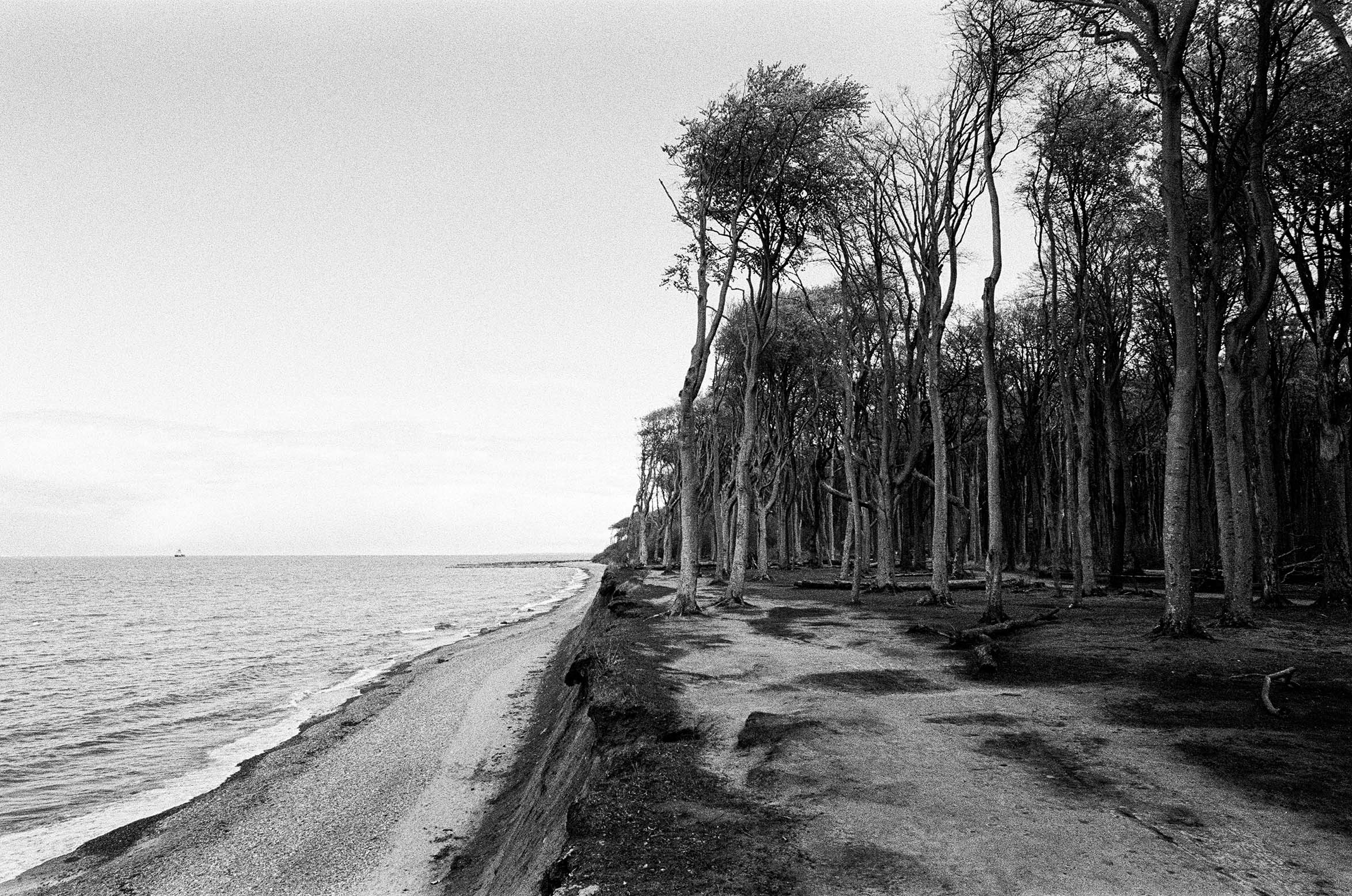
Schwerin seems like a stark contrast to Berlin in terms of size and energy. Has this shift influenced the types of subjects or themes you’re drawn to photograph?
There has definitely been a shift toward more landscape photography. Since this is a much smaller place than Berlin, there’s naturally less opportunity for urban or street photography.
This makes it harder to find subjects to photograph, as they’re different and not as immediately obvious—but I love this challenge.
In my opinion, every place, no matter how small, has countless subjects, motifs, and themes to explore. You just have to unlock them.
3 - Approach to Photography
You’ve mentioned being captivated by the nuances of light and emotion in film photography. How do you approach capturing these elements in your work?
I believe film is a truly unique and special medium in photography. The way it captures light and colour is something I find unparalleled and difficult to replicate with digital photography.
I have a deep appreciation for beautiful light, and that’s one of the main reasons I love shooting on film. It has an incredible ability to reproduce light in a way that feels natural and true to what I see in a scene, capturing nuances that make the final image special and unique.
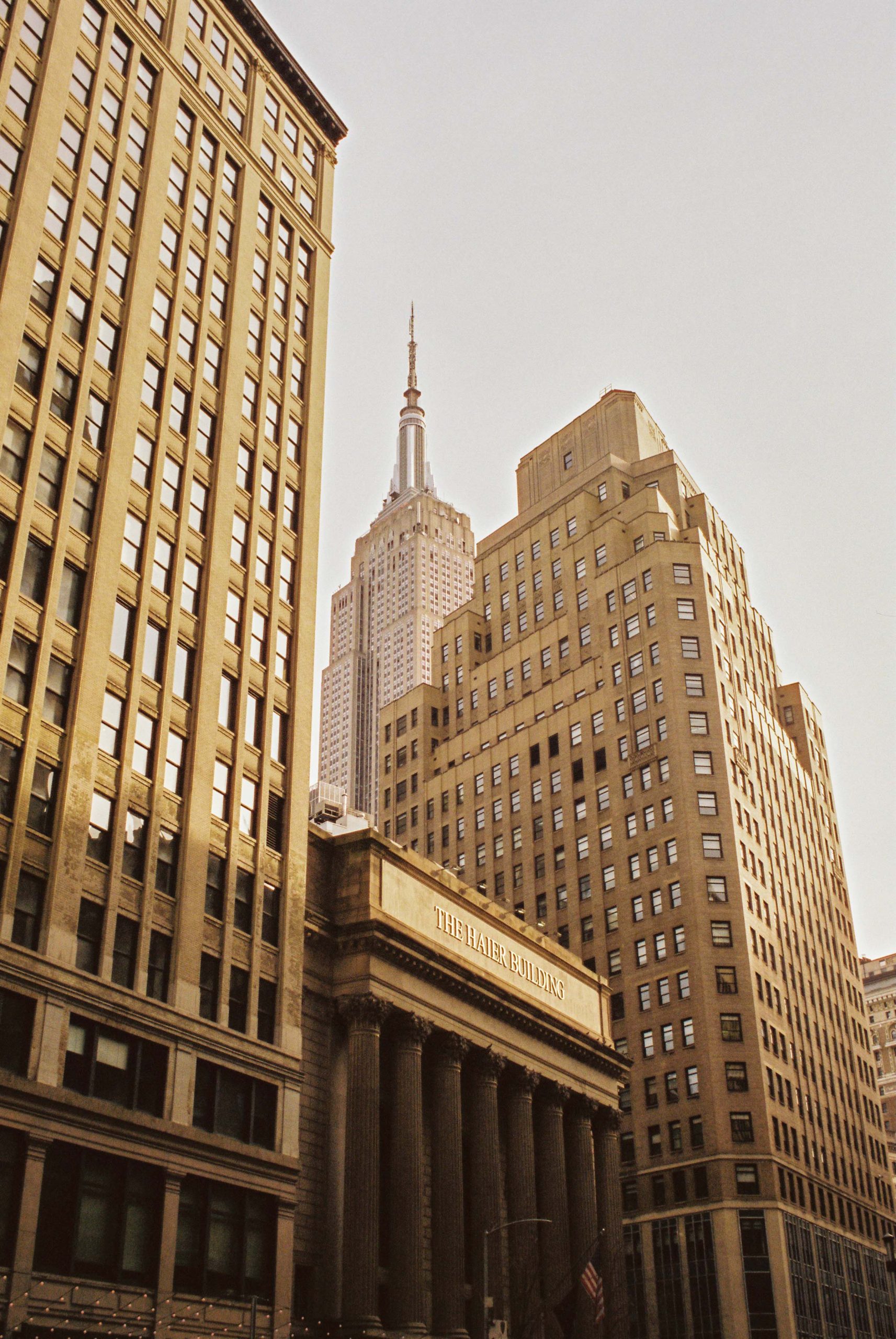
How much of your photography is planned versus spontaneous? Do you go out with specific ideas in mind or let the environment guide you?
At the moment, most of my photography is spontaneous, and I usually decide on the day what I want to do. I love letting the place, surroundings, and the conditions of the day guide my creativity.
This changes when I travel somewhere specifically for photography. In those cases, I like to plan ahead—scouting for interesting spots and locations, and deciding when to shoot based on the time of day.
I recently interviewed Abinav Thakuri, who has a daily practice of a morning photowalk - are there any rituals or habits that help you stay connected to your creative practice?
I have a habit of taking a camera everywhere I go. This really helps me take pictures nearly every day and gives me the opportunity to constantly evolve my photography. I also usually walk to work in the morning and try to take at least one picture every day on my way to the office.
How do you decide whether an image is finished and ready to share with the world?
As I hardly ever edit my images, I usually don’t put too much thought into the process. Once I receive the scans and find an image I like, I do a little fine-tuning in Lightroom and then share it.
Personally, I find it too stressful to overthink the editing process—I’d rather spend my time out taking photos than editing.
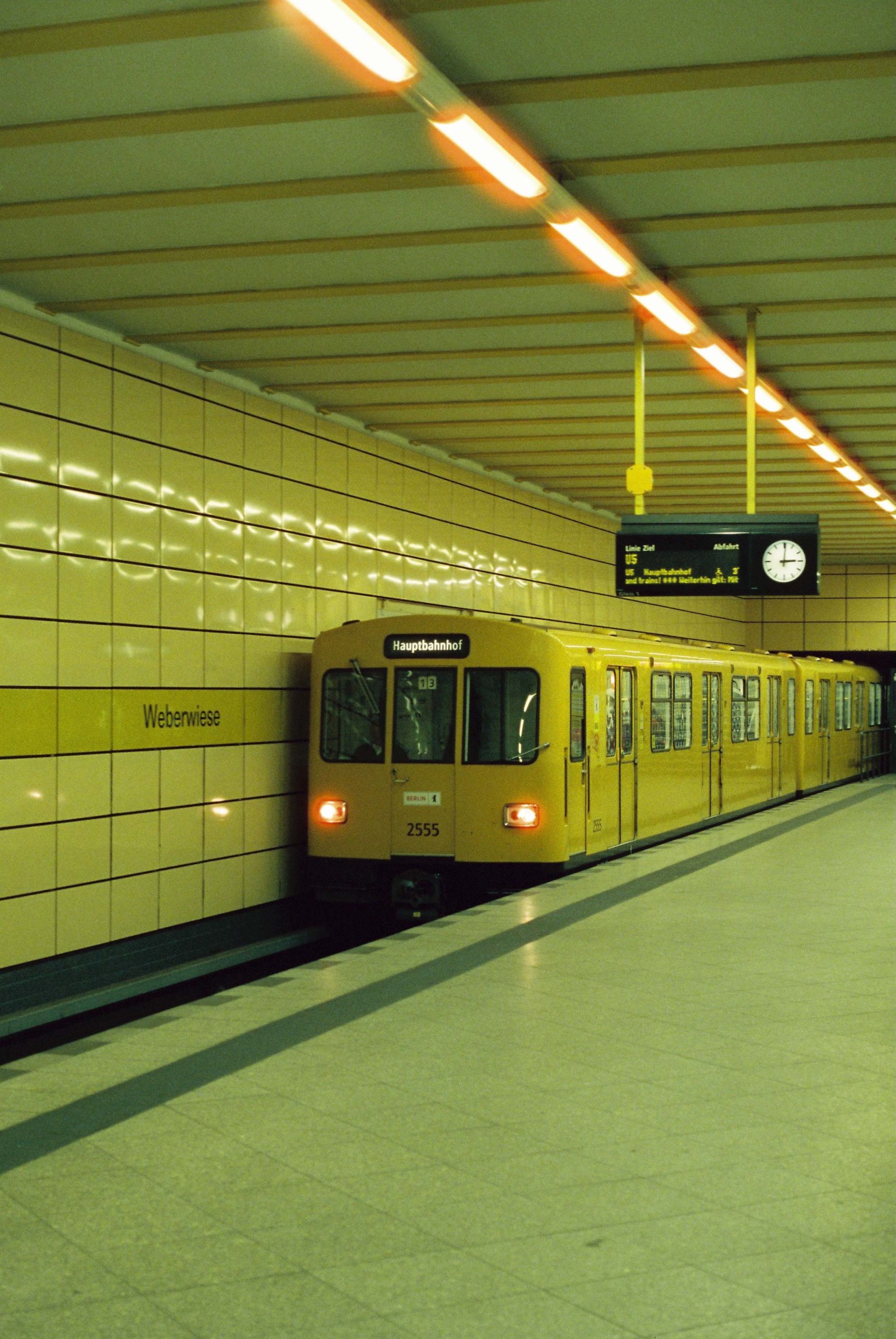
What role does storytelling play in your photography? Do you aim to tell a narrative with each image or more broadly across a body of work?
For me, photography is all about storytelling. Sometimes a single photo can capture a whole moment, while other times, a series of images works together to tell a bigger story.
I don’t always go in with a set narrative, but I try to capture a feeling or a sense of place. Something that makes people stop and connect.
The best shots, I think, are the ones that leave a little space for the viewer to find their own meaning in them.
How do you decide which film stock or camera to use for a particular shoot? Are there specific combinations you favour for different subjects or moods?
It really depends on the subject or place I’m shooting and the available light—whether it’s indoors or outdoors, a sunny day with beautiful golden light, a rainy evening, or an overcast and dull day.
When I shoot urban city scenes or night photography, I love using Cinestill 800T. It’s one of my favorite color film stocks for these kinds of subjects. I love how it renders tungsten lights and captures the mood of a big city or a nighttime scene.
Another example is fog—I absolutely love shooting black and white film in the fog. It gives me such a moody vibe, and I personally think it’s a perfect match. For foggy scenes, I always choose between Kodak Tri-X and Ilford HP5, both of which are my absolute favorites for black and white film.
When shooting on a sunny day or during golden hour, I tend to go for Kodak Gold or Portra 800. I really love those two film stocks as well.
Camera-wise, I use the Nikon FM2n about 90% of the time. It’s a fully mechanical camera, with the only automatic feature being the light meter. I love being in control of everything the camera does.
Plus, it’s super light and compact, which is awesome—I hate feeling restricted by a heavy camera or too much gear. I also have other Nikon SLRs, like the F100 and the F90x, but I tend to use them less frequently.
Recently, I’ve started shooting medium format on a Yashica Mat with a waist-level viewfinder, which I’ve been using a lot for landscape photography.
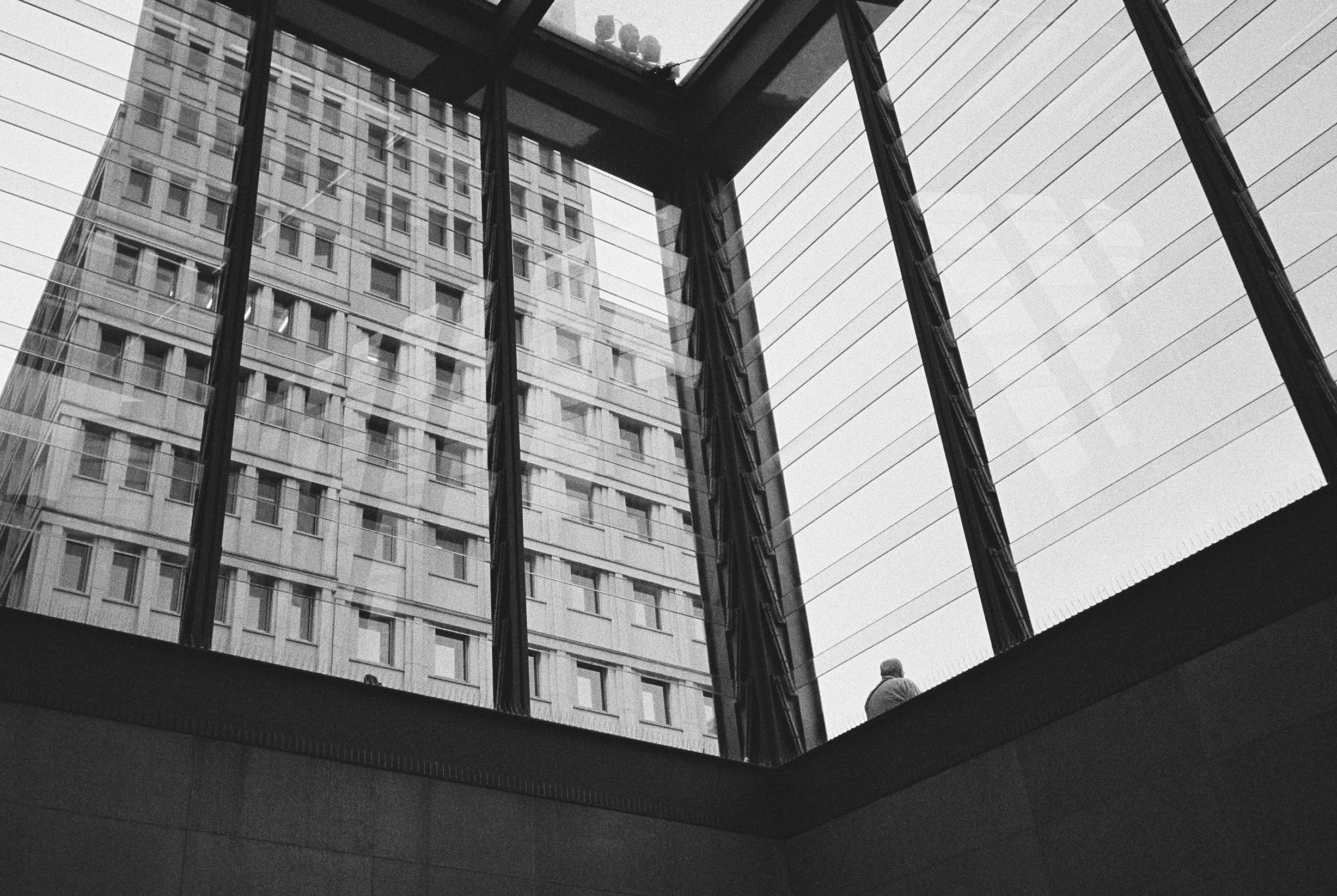
4 - Influences and Inspiration
Who are the photographers, artists, or creators that have influenced you the most?
There are so many amazing photographers who inspire me, and I often go through phases where I get hooked on a certain photographer’s work for a while, diving into their portfolio for inspiration. William Eggleston, Joel Meyerowitz, Nan Goldin, Alec Soth, and Todd Hido are just a few of the photographers who inspire me the most.
You quoted William Eggleston on your website: “Photography just gets us out of the house.” What does this quote mean to you personally?
I think it’s such a simple yet powerful quote. Photography is what makes me pick up a camera every day, go outside, see the world, and take pictures.
Are there particular subjects or themes that consistently inspire your work, such as certain landscapes, people, or emotions?
I love shooting all sorts of different subjects and try not to limit myself to specific themes. Especially since I’m still at the beginning of the learning curve, I want to try as much as possible to improve my photography and explore different techniques. I enjoy experimenting with new things and approaches.
I also tend to go through phases where I’m inspired by certain landscapes or themes. For instance, right now, I’m really enjoying shooting black and white film in bleak and foggy landscapes. When traveling, I always let the place, the city, and its people inspire my photography.
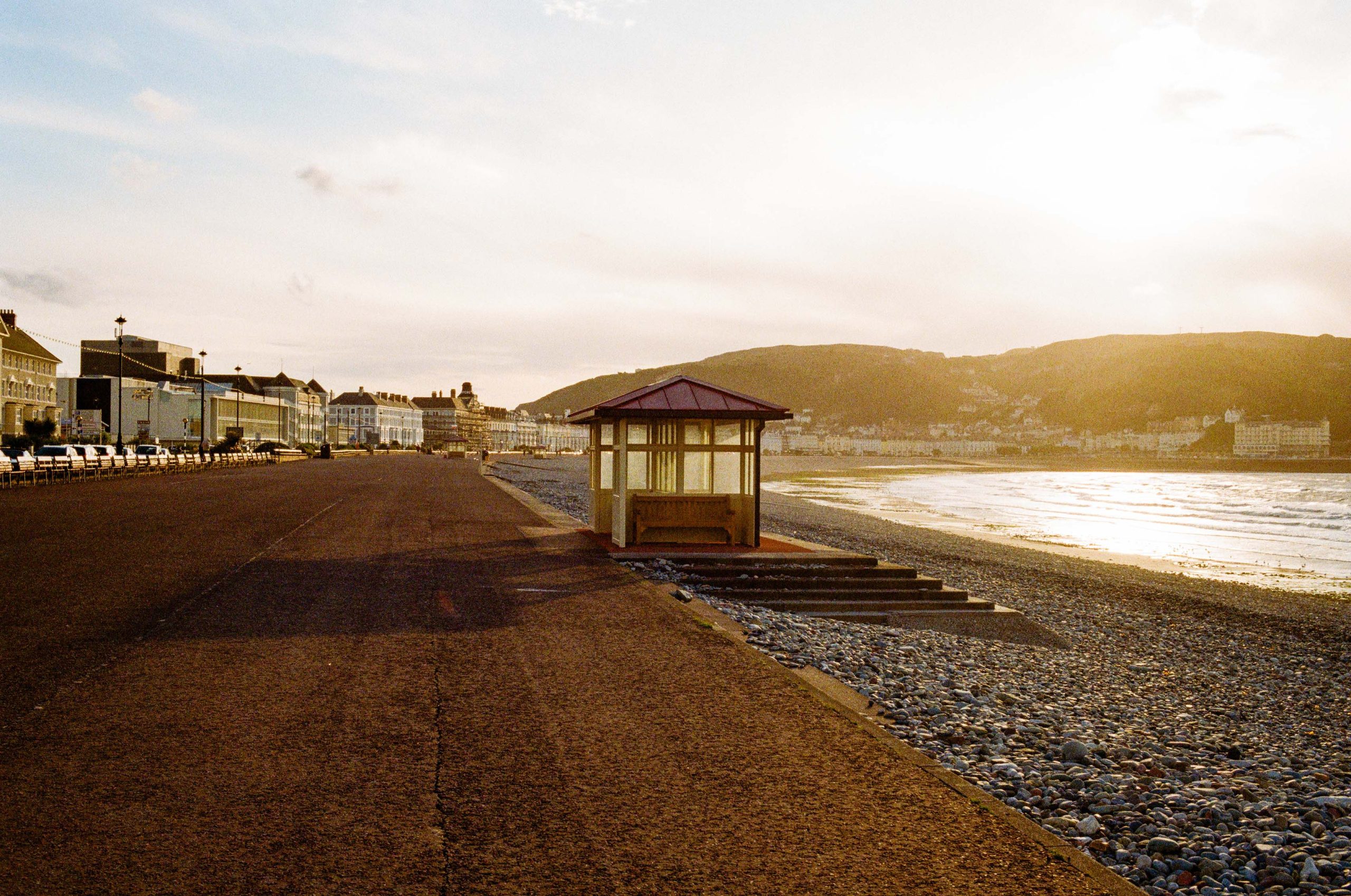
5 - Reflections & Future Plans
Looking back on your journey, what has been the most rewarding aspect of your work as a film photographer?
Being able to showcase some of my pictures in various open-call exhibitions in Berlin over the last two years has been amazing.
There’s just something truly special about seeing your photography printed, framed, and hanging on a wall for others to experience.
What advice would you give to someone just starting their journey with film photography?
Just have fun! Don’t worry too much about gear. Start with a cheap camera and use the extra money to buy more film—that way, you can shoot more and gain more practice.
Also, don’t get caught up in the hypes or trends on Instagram or other social media platforms. It’s super important to find and develop your own visual language instead of trying to imitate trends or feeling like you need to produce perfect images constantly to satisfy the algorithm.
This will only block your creativity and take away the fun.
Do you see film photography as primarily a personal practice, or do you also view it as a medium for fostering community or sparking dialogue?
Film photography is so much more than just personal practice.
I absolutely love the entire film community. There are so many amazing people in it, and I’ve had the chance to get to know so many incredibly inspiring photographers through it.
It’s such a supportive and creative community, and I truly love being a part of it.
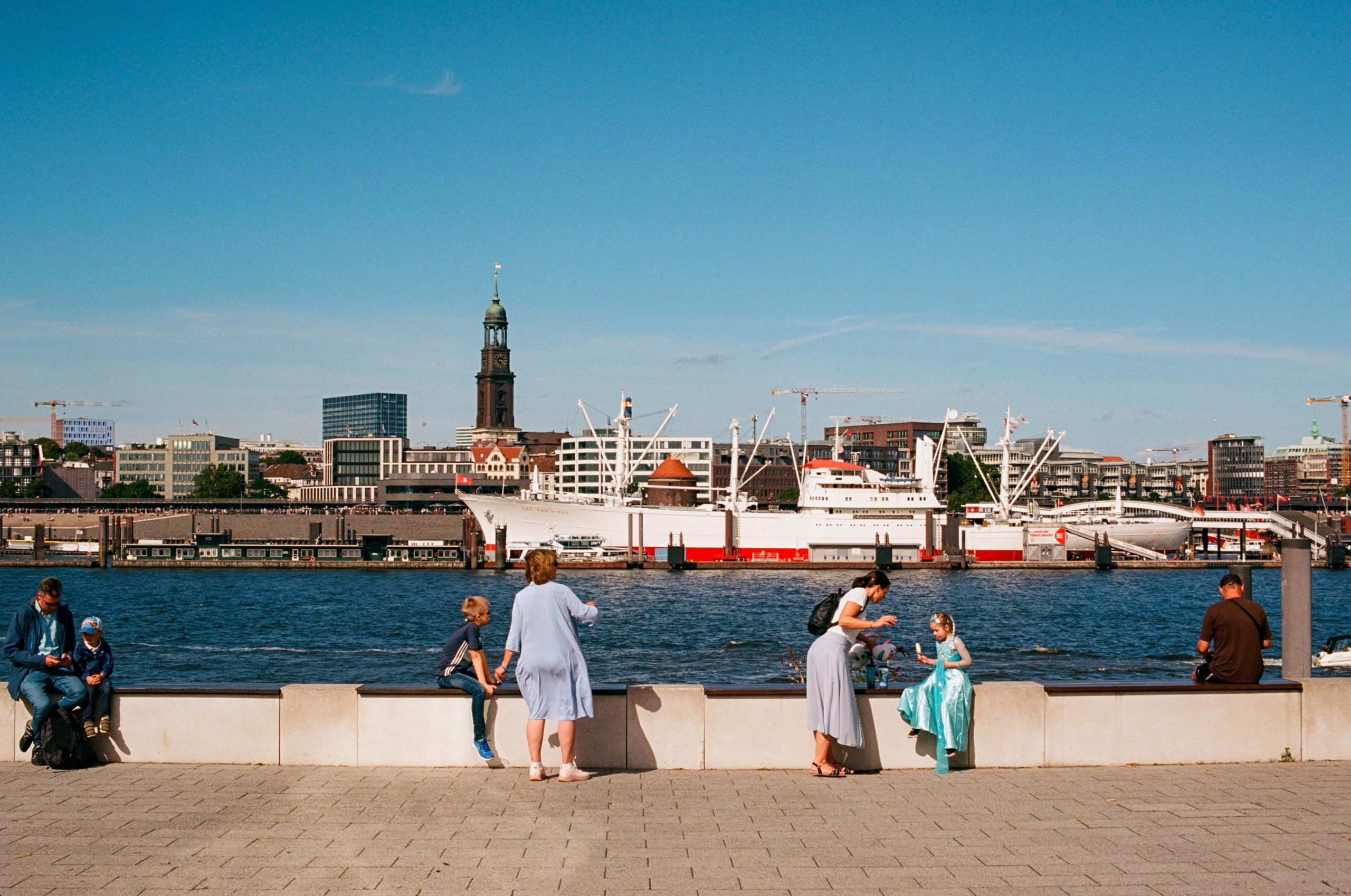
Are there any locations, subjects, or projects that you’ve always dreamed of photographing but haven’t yet had the chance to?
There are so many places I’d love to photograph. Japan, Iceland, and the Southern States of the US are at the top of my list right now.
As for projects, I’d love to accompany and document a specific community or group of people somewhere in the world over an extended period of time.
If you could summarise what photography means to you in one sentence, what would it be?
Photography is a huge part of my life and allows me to see and understand the beauty of the world around me in my own personal way.
Lastly, what do you hope people take away from your work when they see it?
I hope to inspire people to pick up a camera and express their creativity in their own unique way. I want them to experience how fun it is to capture the beauty of our world through the lens and tell their own visual life story.
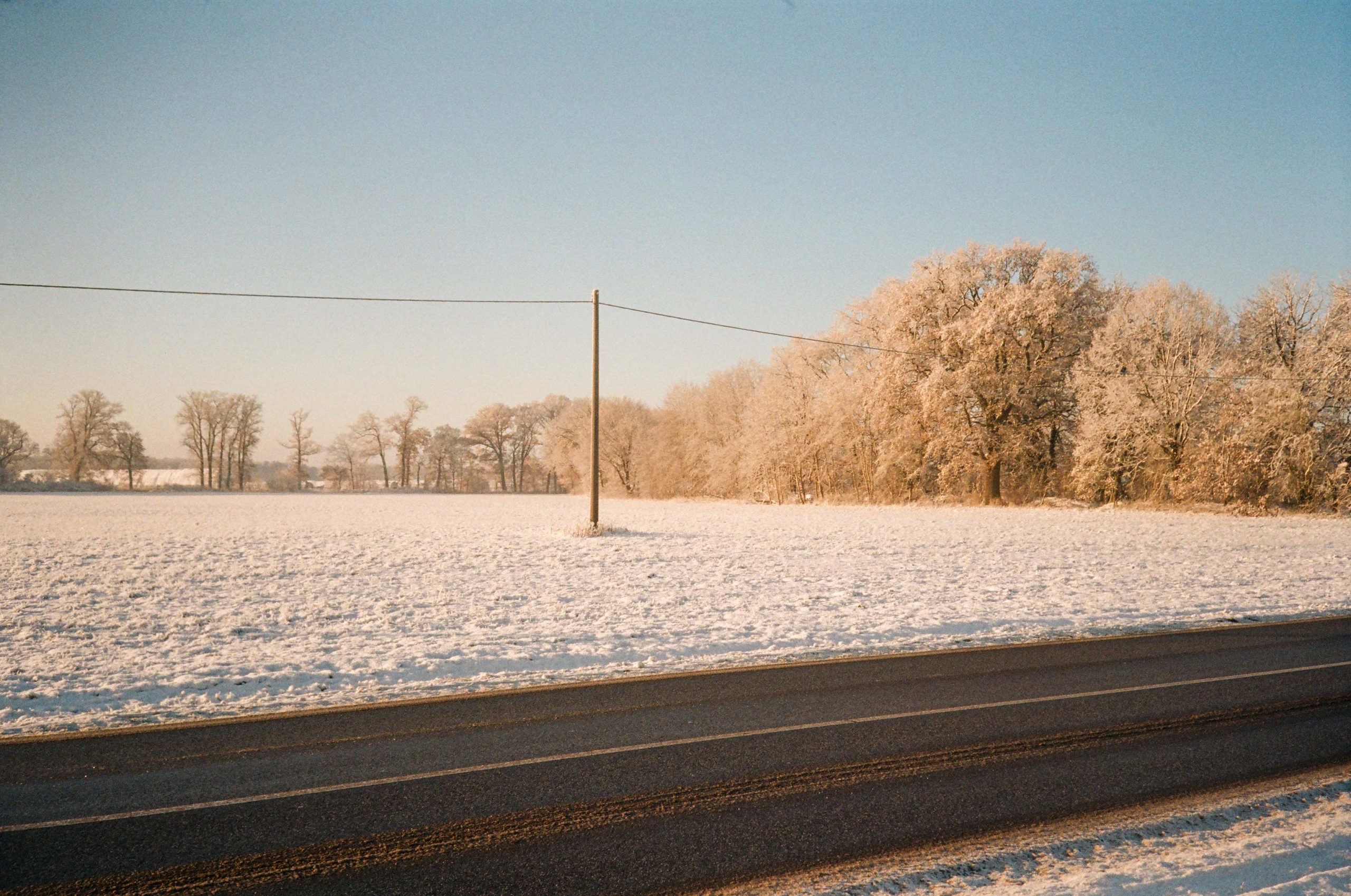
Fred Ostrovskis-Wilkes
I am a photographer, writer and design agency founder based in Sheffield, UK.
Parker Loew - An Interview
Parker Loew - Conversations with Creatives
Quick Summary
Conversations with Creatives is an ongoing interview series between myself and those that truly inspire me. This is a space for me to dig deeper into their creative journey and process to uncover more about what led them here, what pushes them forward and what they hope to achieve.
Interview #2 - Parker Loew
Parker Loew is a film photographer and outdoorsman currently based in Colorado.
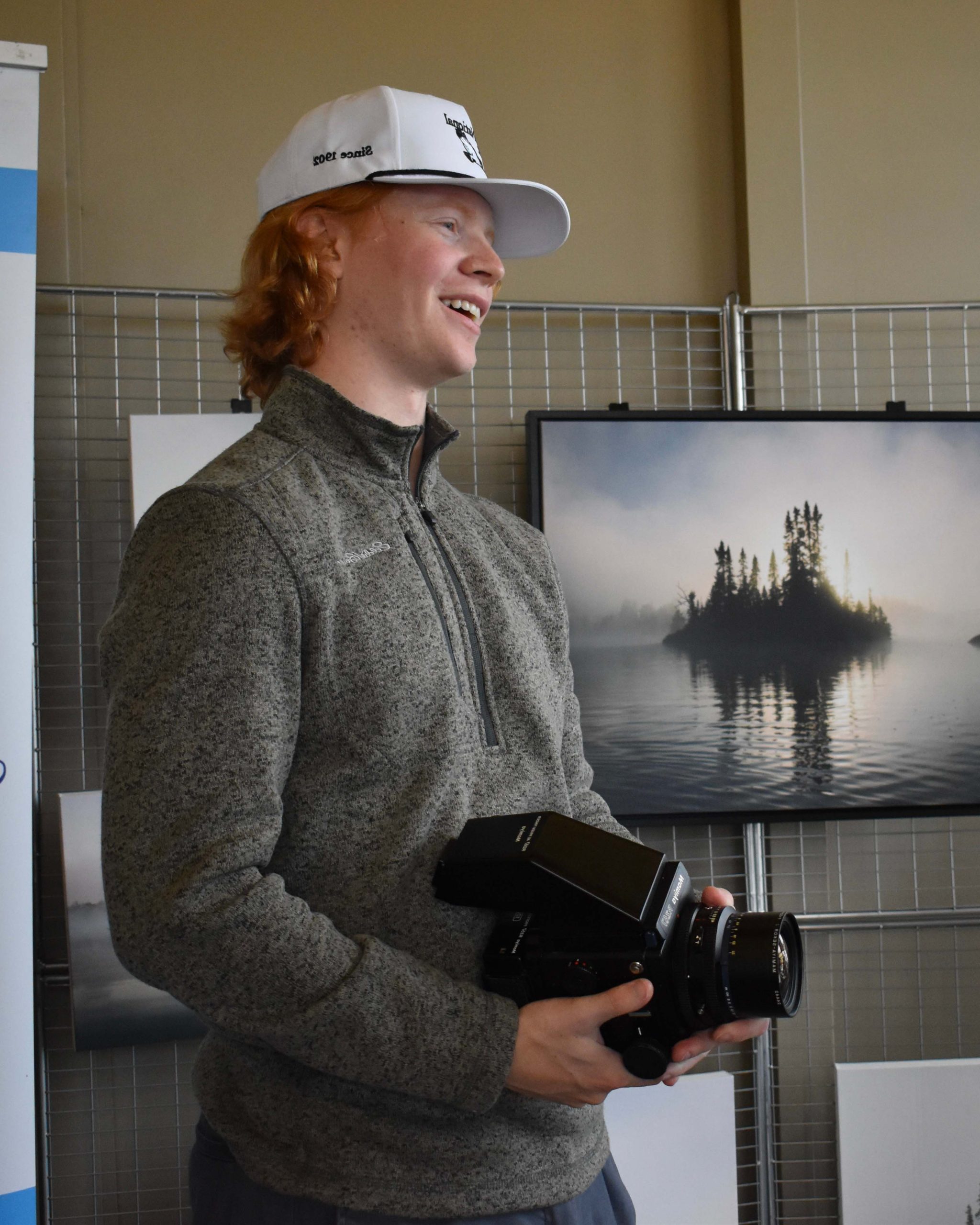
Once you see Parker's work, it's hard to forget.
His film photography captures the vastness, solitude, and beauty of remote landscapes that feel deeply personal yet universally resonant. From the foggy waters of Boundary Waters Canoe Area to the stark, snow-covered plains of Routt County, Parker’s photographs don’t just depict nature, they transport you into its heart.
What struck me most about Parker’s work is his ability to weave themes of isolation, resilience, and memory into his images, creating not just stunning photographs but also evocative narratives. His commitment to long-term visual studies, such as Islandland, Westworld, and Winter in Routt County, demonstrates a dedication to not just capturing moments but fully immersing himself in the stories of the landscapes and people he photographs.
In this interview, we dive into his passion for film photography, the creative process behind his series, and how his understanding of the natural world shapes his work. Parker’s reflections on photography as both a tool for connection and a medium for conveying the essence of his subjects offer an inspiring glimpse into what drives him to pick up his camera and get shooting.
I hope this conversation inspires you as much as it inspired me. You can follow Parker on Instagram here.
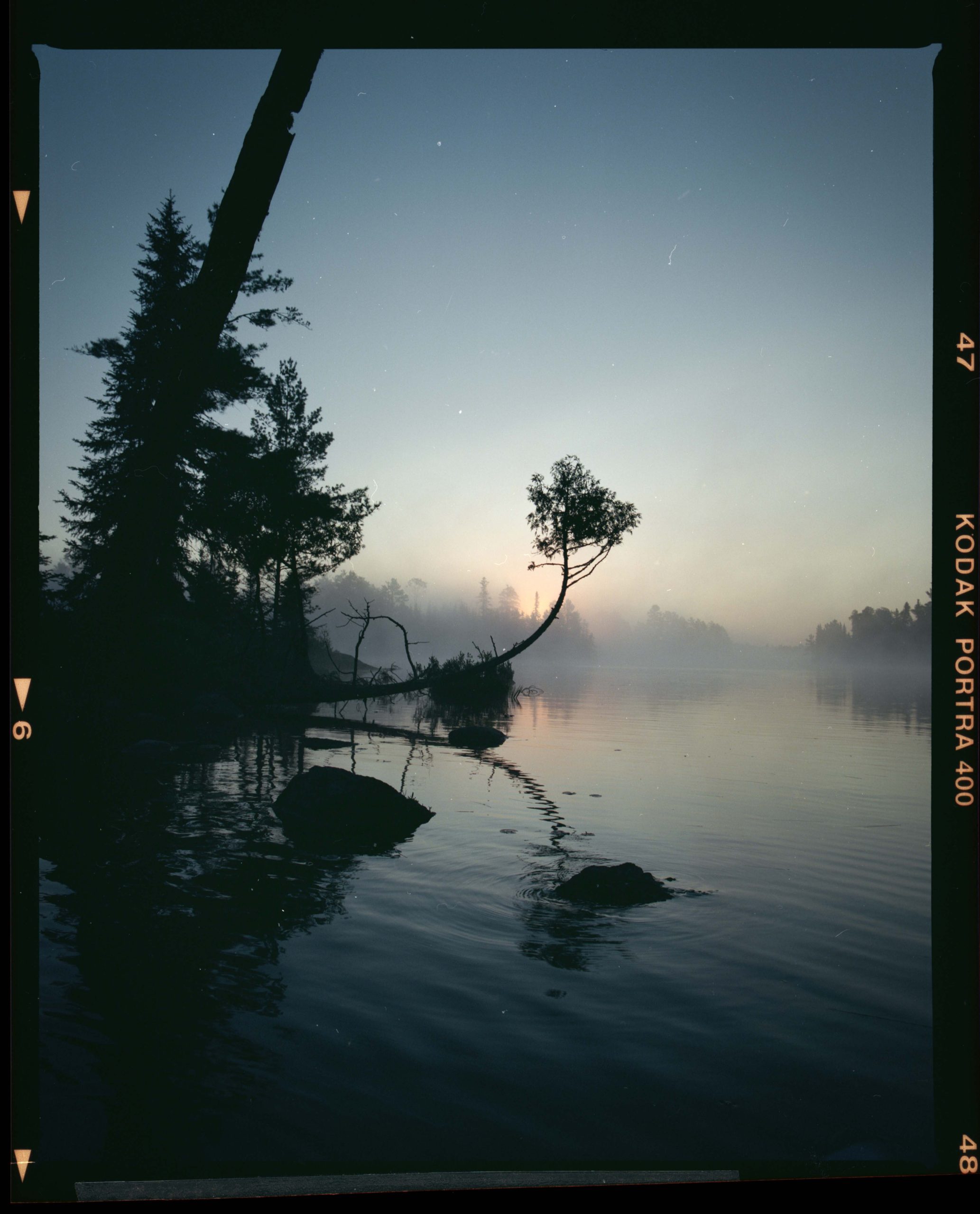
1 - Early Days...
I’d love to, firstly, understand more about where you grew up and your younger years. Could you give a brief sketch of your early childhood?
I grew up in a suburb of Minneapolis, Minnesota; my mom was a nutrition scientist and my dad an architect.
I went to a small private catholic school for most of my secondary schooling.
Though I grew up in a mostly urban environment, my house backed up to a small regional park with a couple hundred acres of forest and small lakes and ponds. My brother and I spent a ton of time together exploring this area growing up.
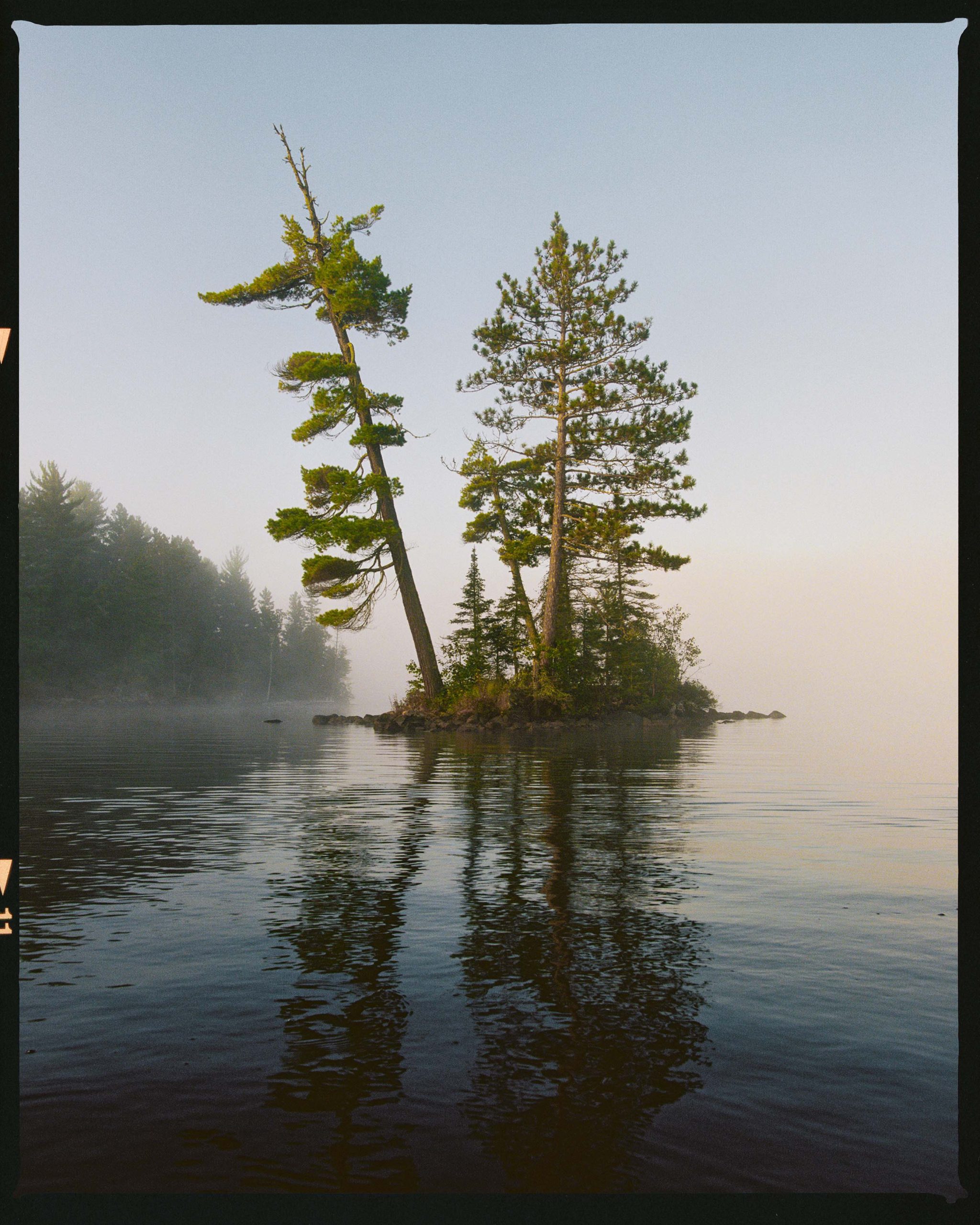
Are there any aspects of your childhood or youth that led you toward an appreciation of the outdoors and eventually into your photography?
When I was about 8 years old my Mom got a work cell phone that could take pictures.
I was constantly bugging her to take pictures with her phone of butterflies behind our house in the regional park, and eventually, my parents thought it a good idea to just buy me a camera.
They bought me a blue Nikon Coolpix which I still have to this day. I brought the camera everywhere for a few years until I became a teenager and lost interest in photography for a while.
I shot mostly insects and was particularly captivated by caterpillars and butterflies.
Was there a defining moment that made you realise photography was something you wanted to pursue seriously?
I didn’t pick up a camera again until I was a sophomore in college.
I was looking for a way to express myself and remembered how much I loved taking pictures when I was a kid. I bought a camera (Sony A7s with a 50mm 1.8 kit lens) and started taking pictures at parks and natural areas around my campus (University of Minnesota Twin Cities).
Were there any specific photographers, artists, or outdoor experiences that shaped your early approach to photography?
Growing up watching the Nature Channel and Discovery, I was always inspired by the commitment and artistry that went into capturing the natural world.
My favorite photographer who I am constantly inspired by is Emmanuel Lubezki.
The way he captures light is incredible and something I often try to emulate. Another photographer whom I admire for capturing atmospheres so perfectly is Todd Hido.
An experience that permanently shaped my approach to photography was a family trip out west to Yellowstone and the Grand Tetons.
Becoming immersed in a world where I was unfamiliar and out of my comfort zone was a spectacular experience, and one I also try to create in my photography.
Two other experiences that heavily shaped my approach to photography were my photojournalism internship with the Wyoming Game and Fish Department, and working as a reporter for the Ely Echo Newspaper in Minnesota for a year and a half.
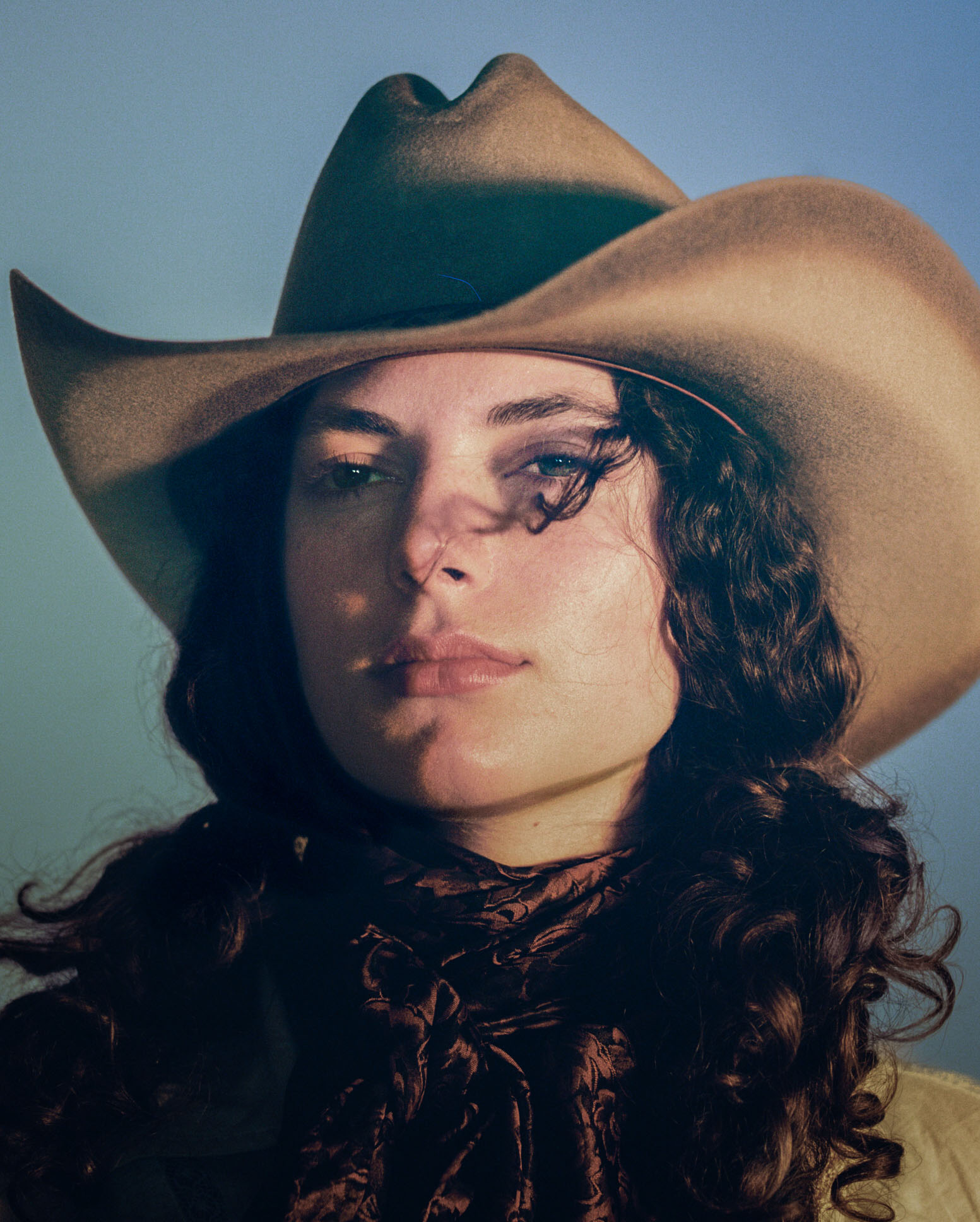
2 - Film Photography and Process
You shoot on film, which adds a unique depth and texture to your images. I’m interested in what drew you to film photography, and why have you chosen to work with it over digital?
My friend in college, Jay Sullivan, showed me one of his buddy’s Instagram pages who shot film (Kaleb Jordan) and I was blown away by the image quality and how different the images felt from digital.
I didn’t start shooting on film however until I got a photojournalism internship with Wyoming Game and Fish Department. They had me clean their photography closet and I found an old Nikon FM2 and a suite of lenses. I asked my boss if I could use it for the summer and he said yes, so I shot a bunch of film in my free time that summer.
This internship was a fantastic experience and one that also permanently shaped my style and creative process. After the internship, I bought an RB67 and used it for a couple of years until I upgraded to the RZ67 which I still own today.
I prefer to shoot film because it gives images a classic, timeless look which isn’t possible when shooting digital.
Also, I am not looking at my monitor 24/7 when shooting film, which can remove me from the scene. That being said, I do shoot digital in some circumstances and believe there is a time and a place for both.
How do you balance the technical demands of film with the unpredictable nature of outdoor photography?
During my Islandland series when I was in my Kayak with my gear, I kept everything in drybags, and all those drybags in a big drybag.
I also brought with me towels to dry off equipment when it inevitably got wet. I fortunately never had anything of importance fall in the water.
The series I am working on now is much easier to manage equipment, although I do have to deal with foggy lenses every once in a while.
How do the limitations of film enhance your ability to capture the perfect shot?
I find when I am shooting film, the pressure to capture the perfect shot is non-existent. The beauty of film is that it is imperfect, and the imperfections are beautiful.
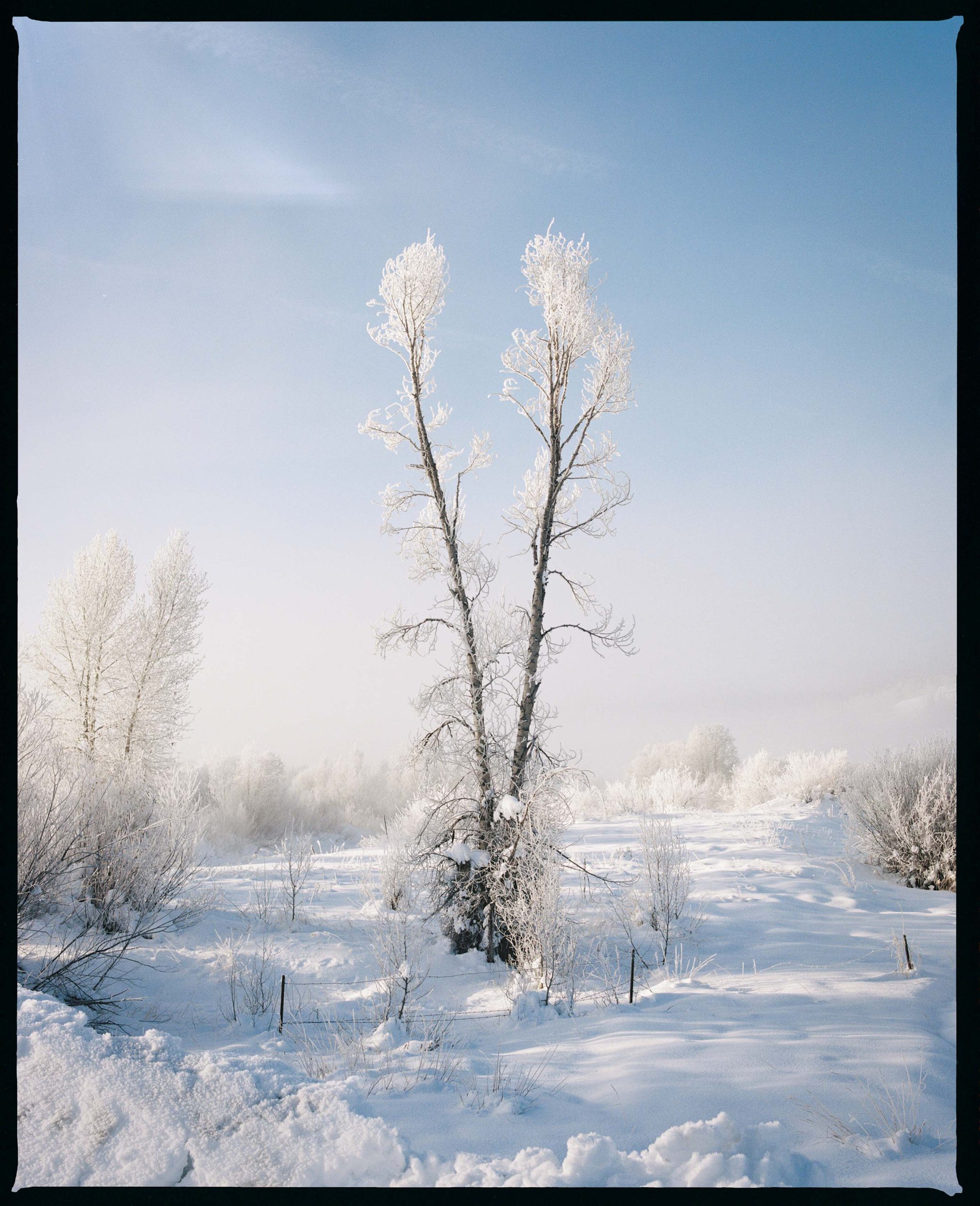
3 - Knowledge of Landscapes and the Natural World
Your work shows a deep understanding and respect for the landscapes and natural environments you photograph. How did you come to acquire such knowledge of the land and ecosystems in places like Routt County and Boundary Waters Canoe Area?
My desire to capture and photograph these areas comes from my respect and appreciation of the landscapes.
I want to share with other people not exactly what these areas look like, but more so what they feel like.
I am often blown away by how different areas feel based on the pictures I see of them. Instead of capturing exactly what these places look like, I want to capture their atmospheres.
Do you spend a lot of time scouting locations before a shoot, or is there an element of spontaneity?
In the Islandland series, I spent roughly half my time on the series scouting. One of the requirements for good pictures in this series was sea smoke or fog. The window of opportunity for this fog was so small I needed to make sure that when it happened, I knew where I was going.
On cold, calm, sunny mornings the fog lasted around 30 minutes after the sun rose, so I needed to be prepared! I often paddled upwards of 5 miles to find these locations.
Some were close to boat launches, some were pretty deep in the wilderness. I am just getting started on my Routt County series but think it will be some of my best work.
While it is a completely different location with different requirements, I still find myself doing a good amount of scouting.
How do the natural elements you encounter (weather, light, time of year) impact your creative process? Is there a particular season or condition you find most inspiring to shoot?
I find fog by far the most appealing to shoot in, as do many photographers. It offers depth, isolation, and atmosphere. If there is ever fog in Routt County I try to be there with my camera.
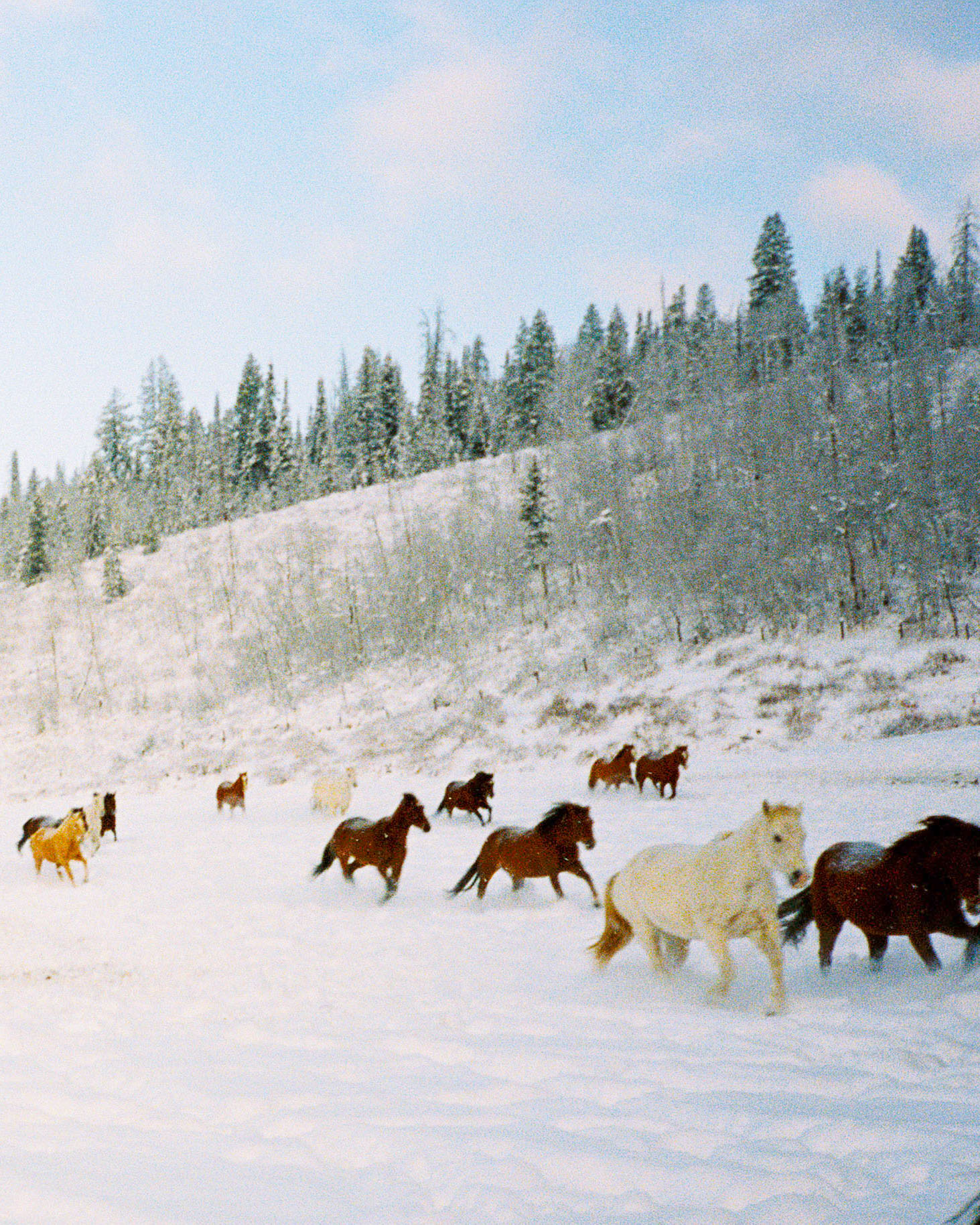
4 - Exploration of Themes and Series
You’ve developed several long-term visual studies that I love, each with a distinct theme. What drew you to focus on series like "Westworld," "Winter in Routt County," and "Islandland"?
One thing that draws me to continue pursuing photography as a hobby/career is its ability to capture a place and time.
I try to create escapism in my photography, and by focusing on a smaller area, I believe I can transport people into my world.
When people look at my grid I want them to gain a sense of awe and mystery, and I want them to wonder if that is really what the BWCA or Routt County is like. The sense of mystery is quickly vanishing from the world (or maybe I’m getting old) but I want to try and create some mystery and create a world based on my interpretation of the places I live/work.
I always love it when photographers sink their teeth into a project and enjoy seeing the end results. I hope I can reciprocate that.
Winter is often a time of fallow for creative minds, but in your “Winter in Routt County” series you document the isolation, harsh beauty, and human effort against the element. What is it about winter that energises you creatively?
I didn’t expect to create anything this winter and had planned to put photography down for the season.
Something inside of me drove me to do some exploring though, and I realized that one area of Routt County got routinely foggy and perfect for photography.
The winter here is barren but beautiful, and hopefully my photography showcases that.
As I write this many of the images I have for this series are still unpublished, but I hope it comes together like I envision.
One of my favorite directors, Alejandro Iñárritu once stated “The poet might know what he wanted to write, but he will never know what he wrote.”
While I know what I want to create, I will never know if I was successful, because I can’t see my own work like others do. All creatives are cursed with this dilemma.
"Islandland" offers a stark contrast to your other series, focusing on serene lakes and remote islands. What do these landscapes mean to you, and how do you see the relationship between nature and solitude in this series?
I took on this series while I was working as a reporter for the Ely Echo in Northern Minnesota.
I wanted to capture how the BWCA felt, not necessarily what it actually looked like. Paddling the waters and creating this series offered an escape from my mundane job and life, and I hope people can also briefly escape when they look at the pictures.
One of the themes of this series was isolation and the power of being alone. I wanted to express that there is vulnerability in solitude, but also power.
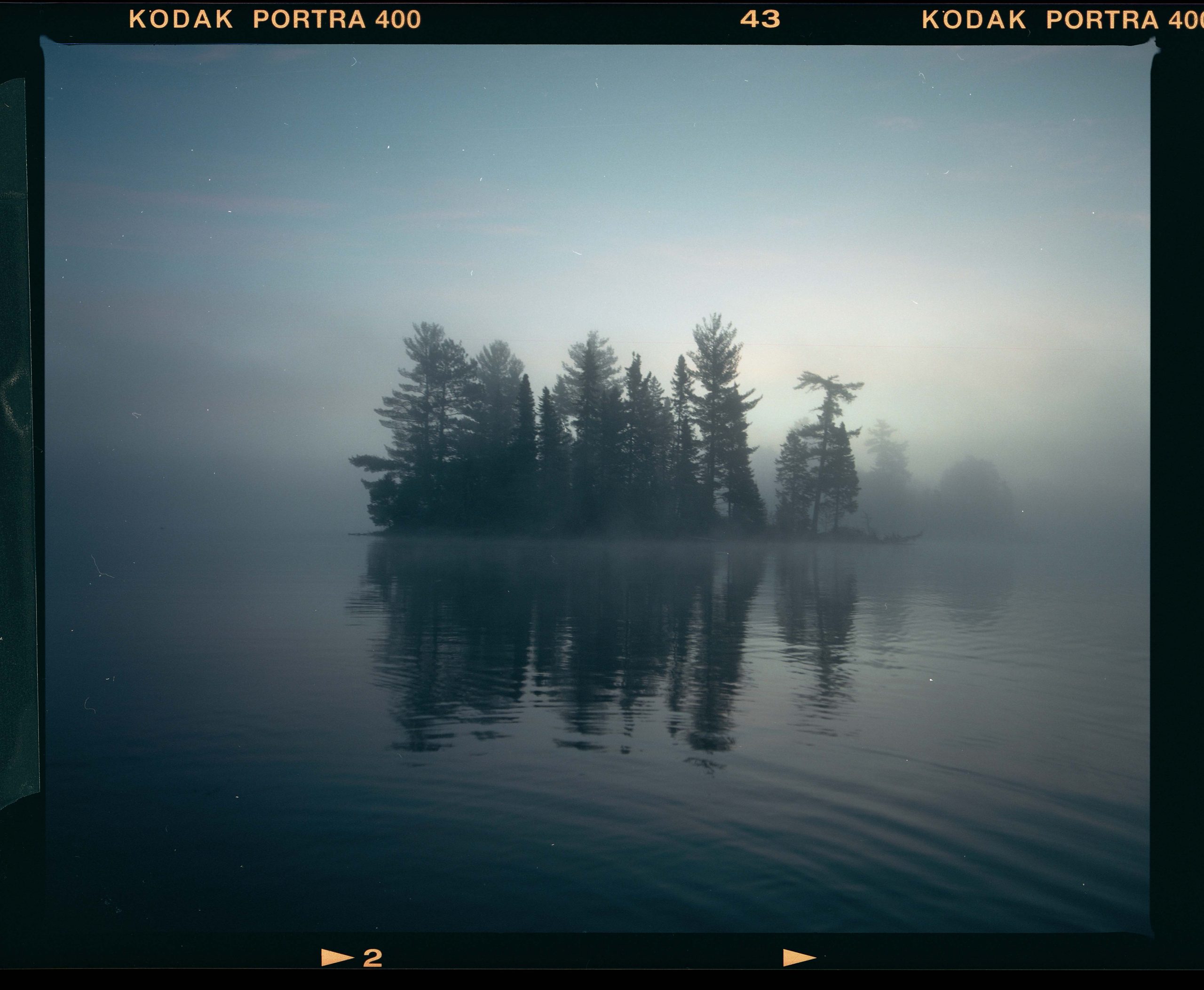
5 - Future Projects and Advice
Looking ahead, do you have any upcoming projects or themes you’re excited to explore? How do you see your work evolving as you continue to document the natural world?
I will be working on the Winter in Routt County series the rest of the winter, and I am extremely excited to continue exploring the themes of this series and to see where it takes me.
The themes I want to explore in this series is solitude (again), and memory. I want my photography to continue evolving as the way I want to express myself continues to evolve.
What advice would you give to film photographers, especially those who are trying to capture the beauty and complexity of outdoor landscapes?
I am one who doesn’t really believe in advice, especially when it comes to creative endeavors.
Get out there and do it yourself and find what works for you.
There is no right way to do it, only your way. Try not to get caught emulating one photographer too much, and try to take inspiration from many different photographers so that you create something new.
That being said, I am a big advocate of a high-quality, built-in light meter! You will save a lot of time and effort by exposing images correctly, and you will have a lot more fun knowing you can be confident in your readings.
Do you have any tips for maintaining patience and presence while shooting in sometimes unpredictable and harsh conditions?
The worse or riskier the conditions, often the better photographs you will get! Don’t shy away from the conditions! Be prepared and try to plan ahead for every circumstance! Dry bags and towels are huge when entering unknown conditions.
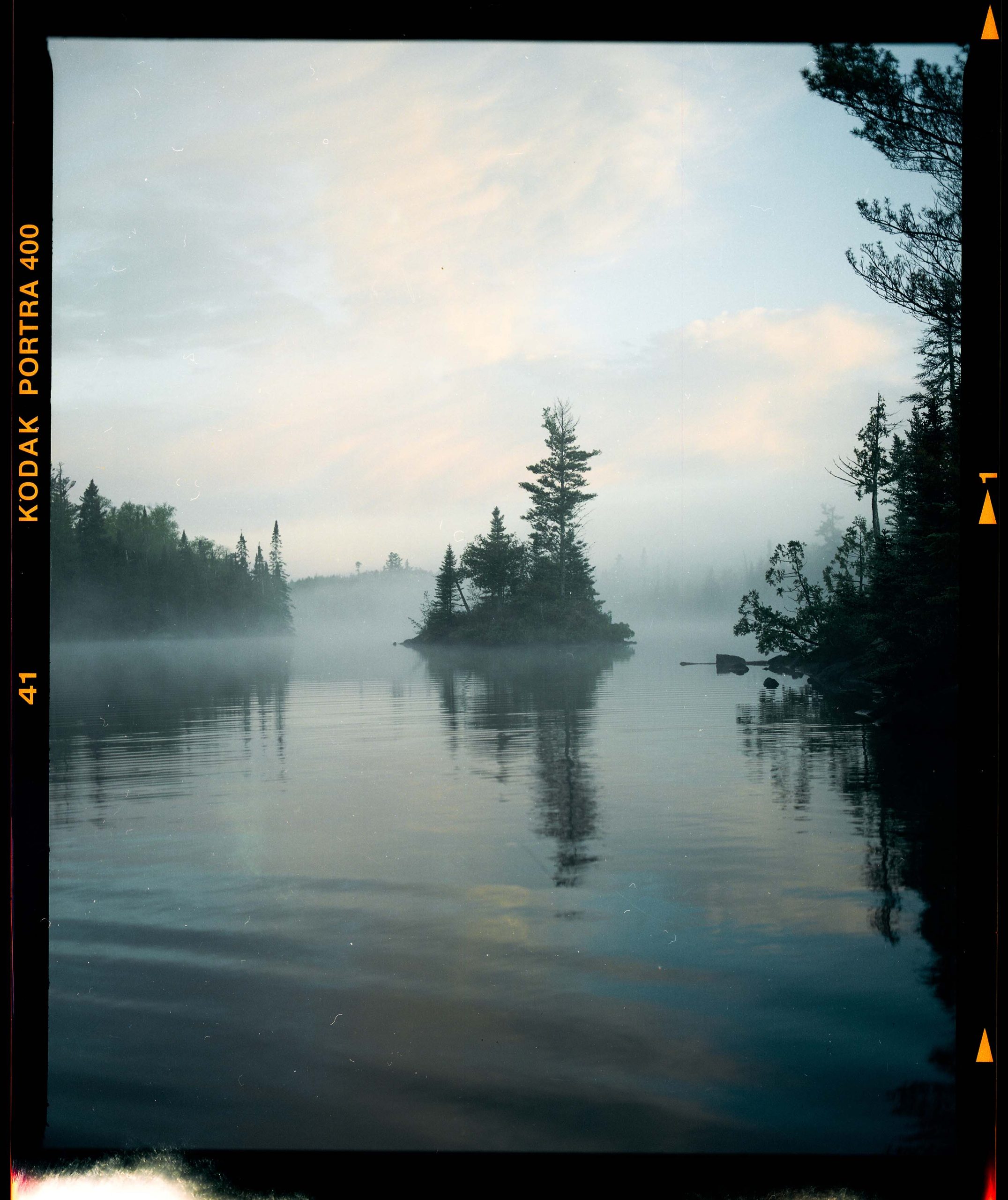
6 - Personal Reflection
How has photography changed your relationship with the natural world? Do you feel that it has deepened your connection to the places you photograph?
I’m not sure I can say it has changed my relationship with the natural world. I look at things in nature (animals, mountains, trees) and I empathize with them, not because it’s the right thing to do, but because I see myself in them.
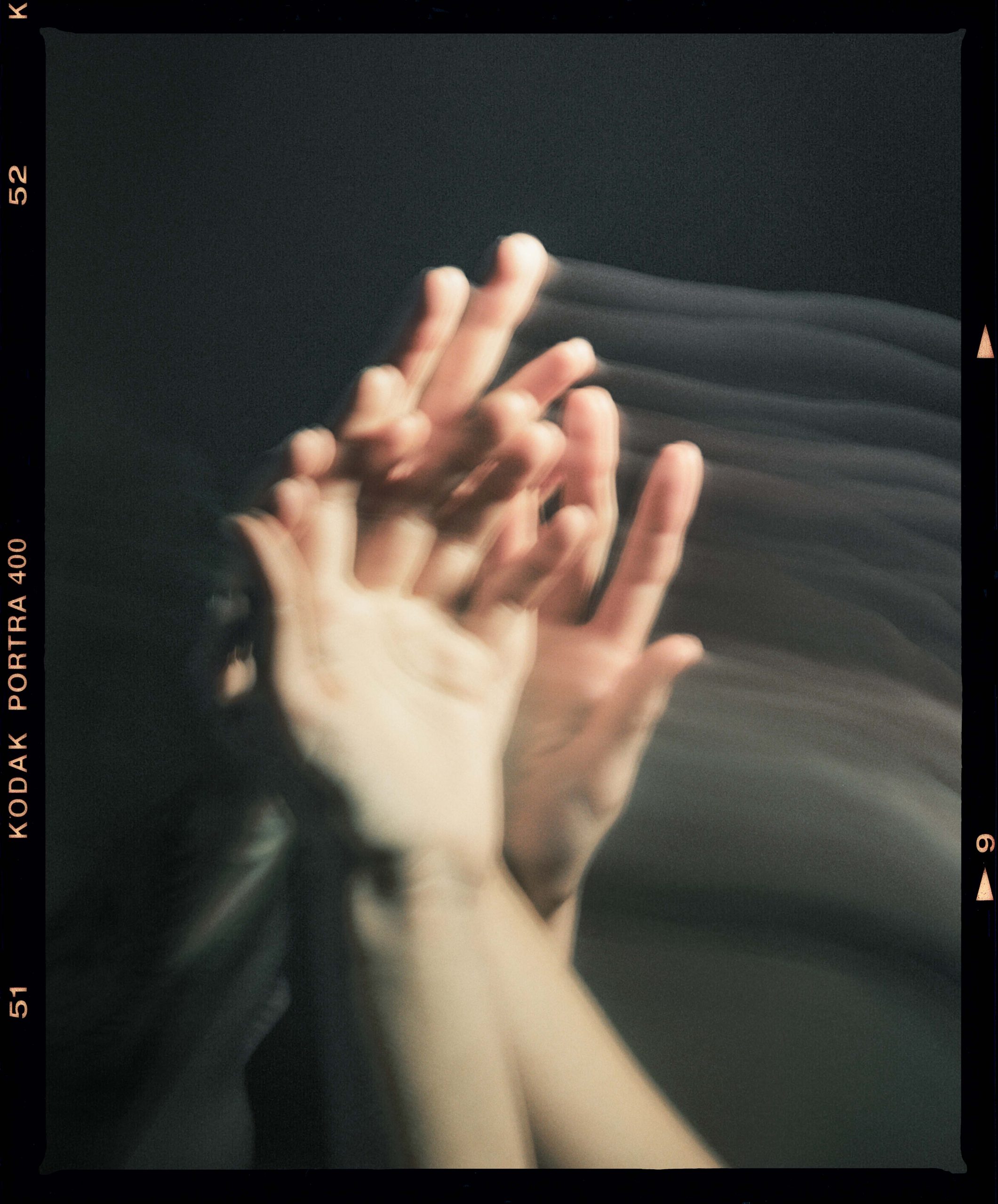
If you could go back to the start of your photography journey, is there anything you would tell your younger self, or something you wish you had known earlier on?
Having too many cameras will only set you back in your creative process. Have one or two cameras is all you need. I try and use between a 25mm and 50mm focal lengths, as I think it is a good representation of the human eye, and images taken with these focal lengths I find easier to relate to.
Lastly, how do you hope viewers of your work connect with the themes and places you’ve captured? What emotions or thoughts do you want to evoke through your photography?
I hope I can spark a sense of mystery in people, and I hope I inspire them to want to create their own photo series.
Fred Ostrovskis-Wilkes
I am a photographer, writer and design agency founder based in Sheffield, UK.
Abinav Thakuri - An Interview
Abinav Thakuri - Conversations with Creatives
Quick Summary
Conversations with Creatives is an ongoing interview series between myself and those that truly inspire me. This is a space for me to dig deeper into their creative journey and process to uncover more about what led them here, what pushes them forward and what they hope to achieve.
Interview #1 - Abinav Thakuri.
Abinav Thakuri is a contemplative film photographer and writer based in San Francisco.

I first became aware of Abinav's work in the Summer of 2024, right at the start of my renewed interest in film photography.
After coming across his body of work shot exclusively in black and white, I felt immediately inspired to vary my approach and reconsider my own creative choices and knew that this was someone who would have a tremendous impact on how I approach this medium.
Abinav’s work is truly special, possessing a timeless, almost ethereal quality that I find is few and far between; when I look at his output I feel like I am bearing witness to something beyond photography – they seem effortless, somehow pure.
There is breadth, too, to accompany the beauty – far from being contained to preconceived themes or subjects, Abinav’s work is constantly surprising and reveals a deep curiosity and connection to his environment, spanning nature, landscapes, urban scenes, and architectural work, exploring deeply the relationship and experience that humans have with these environments and, ultimately, themselves.
Accompanying his photography, Abinav weaves in personal writings that work together in a profound and often haunting symbiosis, poking and prodding, urging you to internally reflect and respond.
It is impossible to ignore the sincere spiritual element of Abinav’s process – it is threaded through all of his output and I wanted to know much more of how he, as a creative, balances his art and his faith.
I am truly honoured to have been able to build a friendship, albeit confined to digital realms for now, with Abinav over the past few months and equally honoured that I am able to kick start this series of interviews with him.
We cover his upbringing between Nepal and India; how photography has become a spiritual practice; explore his process and the themes guiding his work; and reflect on personal struggles, resilience and connection.
I hope you enjoy the dialogue.
You can follow Abinav on Instagram here and view his website here.
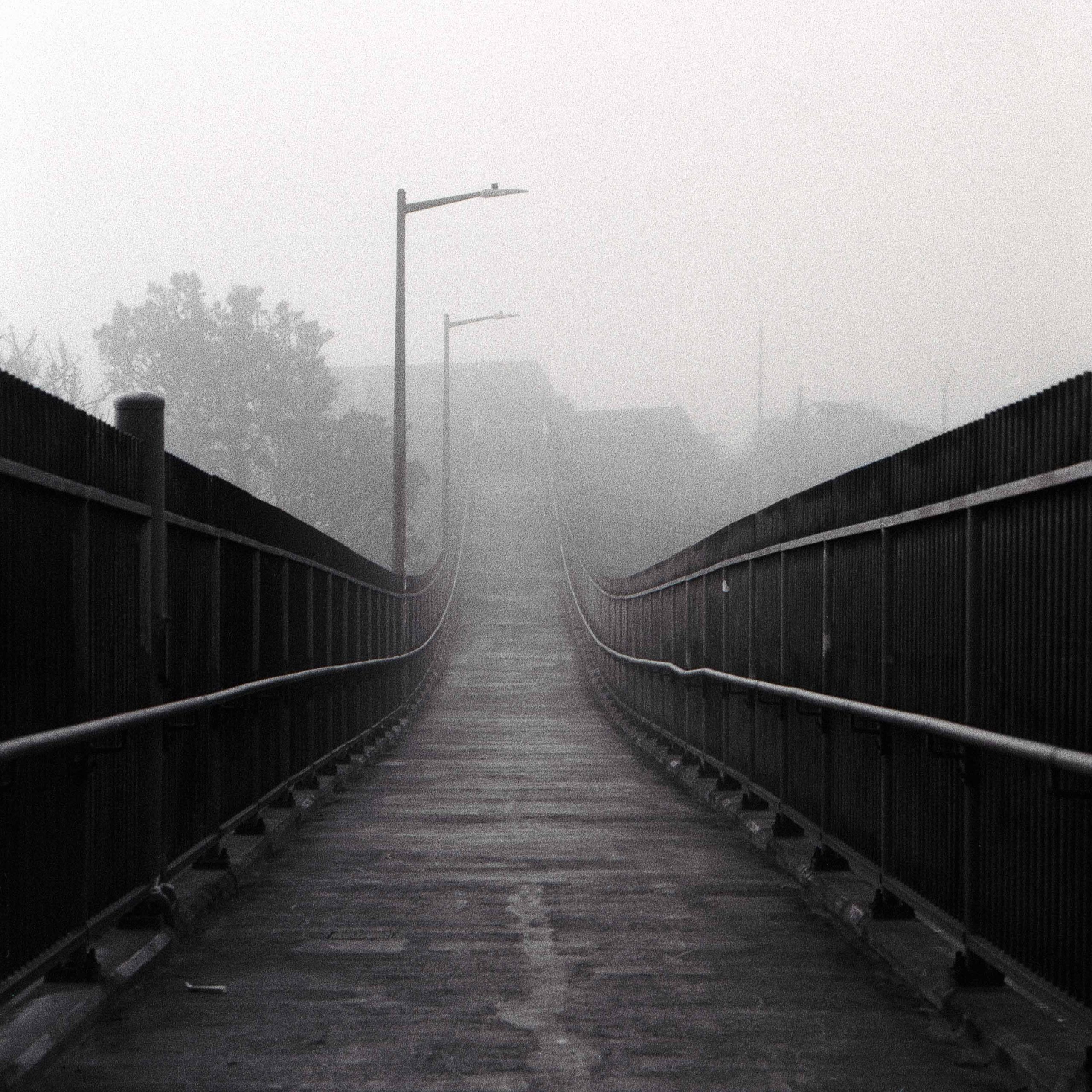
1 - In The Beginning...
I’d love to, firstly, understand more about where you grew up and your younger years. Could you give a brief sketch of your early childhood?
I was born in Kathmandu, Nepal, but my foundational years were spent in Darjeeling, India, in a village called Mirik. My grandparents raised me in their home there, a time that deeply shaped who I would become.
Later, I moved to Darjeeling town to study, living with my grandmother from my father’s side and my aunt and uncle. There was a natural rhythm to life in those hills, even with the constant movement between Nepal and India throughout my childhood and teenage years.
While those early years weren’t always easy, living with different family members in different places, I can see now how each experience was gently preparing me for the path that would eventually unfold.
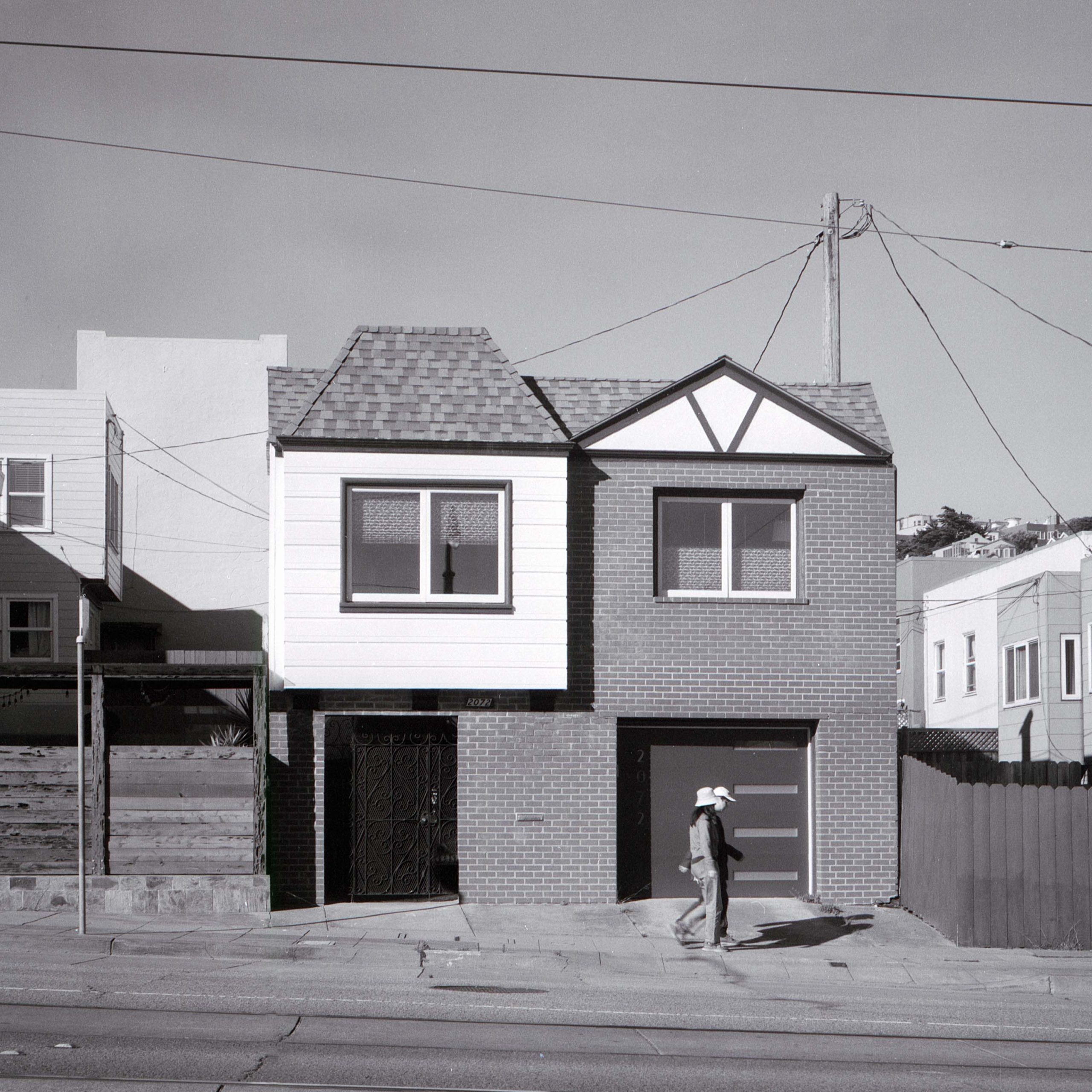
Are there remnants of these formative stages of life that you think still shape your creative vision/expression?
Growing up between Nepal and India, with all its challenges, profoundly shaped how I see the world. Those early hardships taught me something essential – that pain can be transmuted into beauty.
It’s an understanding that still informs how I approach both photography and writing today. What seemed difficult at the time was actually preparing me for this way of seeing and serving.
How did your journey with photography begin? Was there a specific moment or experience that you can remember feeling connected or drawn toward this medium?
My relationship with photography started in my younger years, playing around with my family’s point and shoot cameras.
There was something that felt so natural about it, like the camera was just an extension of myself. This early connection laid the foundation for what would later become something much deeper, though I couldn’t have known it at the time.
What drew you to film photography in particular, and how does it differ from digital photography for you on a personal and creative level?
Film photography feels like coming full circle for me. Growing up, I was surrounded by film cameras, often taking negatives to labs for my family to get developed.
Though I moved through different phases – digital cameras, iPhone photography – when I came to the U.S. and saw film was still very much alive, it felt like returning home in a way.
There was something so natural about coming back to it. The discipline of working with film creates a container that digital could never quite provide. It’s not about nostalgia – it’s about finding the right tool for this practice that’s become so much more than just photography.
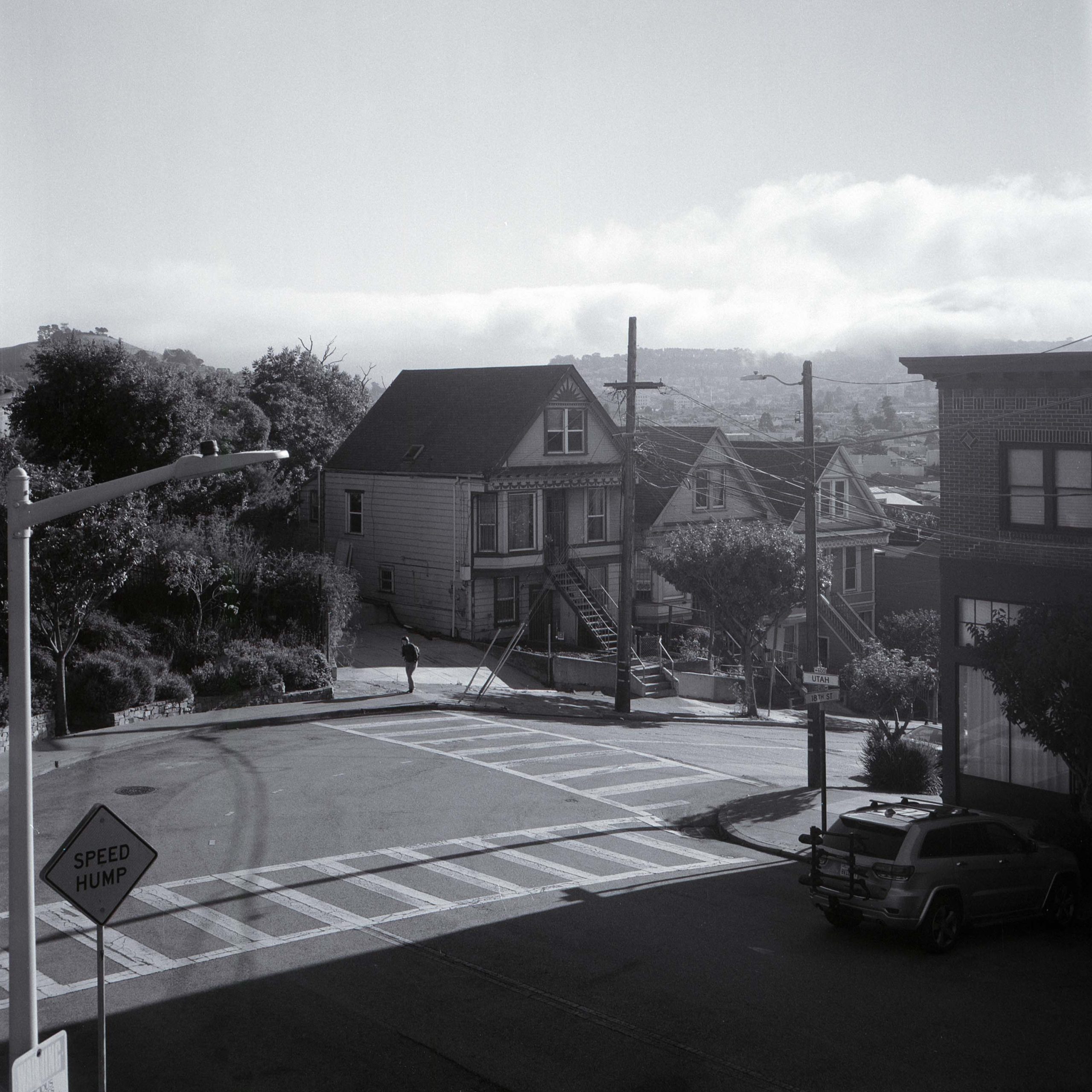
Were there any artists, photographers, or specific life experiences that initially inspired your work?
The most profound influences have been life experiences themselves. Growing up between Nepal and India, along with the hardships I faced during those early years, fundamentally shaped my way of seeing.
Later, losing my grandparents, and not being able to be with them during their passing, completely transformed my relationship with photography.
While I appreciate and look at the work of photographers past and present, my path has been more about listening to what naturally moves through me. What guides the work now comes from a different source entirely.
2 - Photography as a Spiritual Practice
On a practical level, your daily photowalks seem to be an integral part of your creative process, but I’m also interested to uncover more about how this feeds into your own spiritual expression, too.
The morning walks have become a sacred time for me. It’s beautiful how photography and spiritual practice have merged into one flowing experience.
I don’t really think about taking pictures anymore – there’s just this natural rhythm of walking, seeing, and receiving what wants to be captured.
The camera has become a bridge of sorts, helping me translate moments of grace into something tangible that can be shared.
Can you talk about the connection between these walks, your photography, and engaging in your faith/spiritual practice?
These walks have become a form of direct communion with the divine. Each step, each frame, flows as part of an ongoing conversation.
The practice isn’t separate from spiritual life anymore – they’ve become one seamless experience where I serve as a channel for whatever needs to be expressed through both image and word.
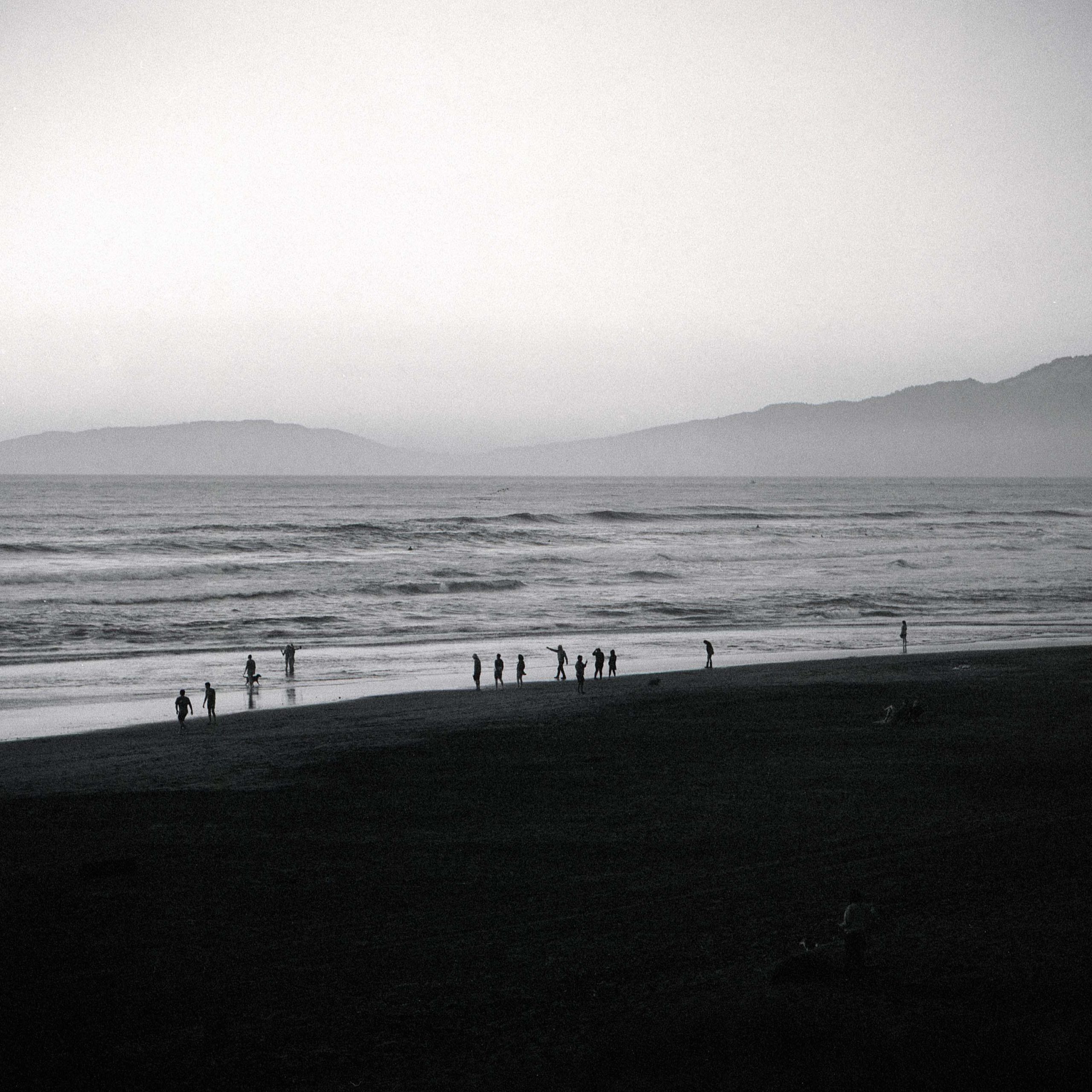
I’ve seen you describe your photography as a contemplative practice. How does this mindfulness influence the way you approach both taking a photo and reflecting on it afterward?
When I’m out there with my camera, there’s this state of complete presence where the understanding comes right in the moment.
The image and its meaning arrive together – not something I need to figure out later. It’s more like being part of a flowing conversation happening through light and shadow.
Ultimately, do you see photography as a form of meditation? If so, how does it help you connect with yourself and the world around you?
What began as photography has evolved into something far deeper – a way of being in complete communion with the present moment.
Everything flows as one continuous movement, where each image that wants to be captured comes through with its own perfect timing.
Do you ever feel that the camera presents a barrier or a blockage between you and the world around you? I’ve been reading Susan Sontag’s “On Photography” recently which has led me to reflect on this question.
No, quite the opposite actually. The camera has become a way of deepening my connection with everything around me. It’s not about capturing or taking something – it’s about being in complete communion with the moment.
When I’m out there, there’s no separation between photographer, camera, and what’s being photographed. It all becomes one flowing experience of divine grace moving through.
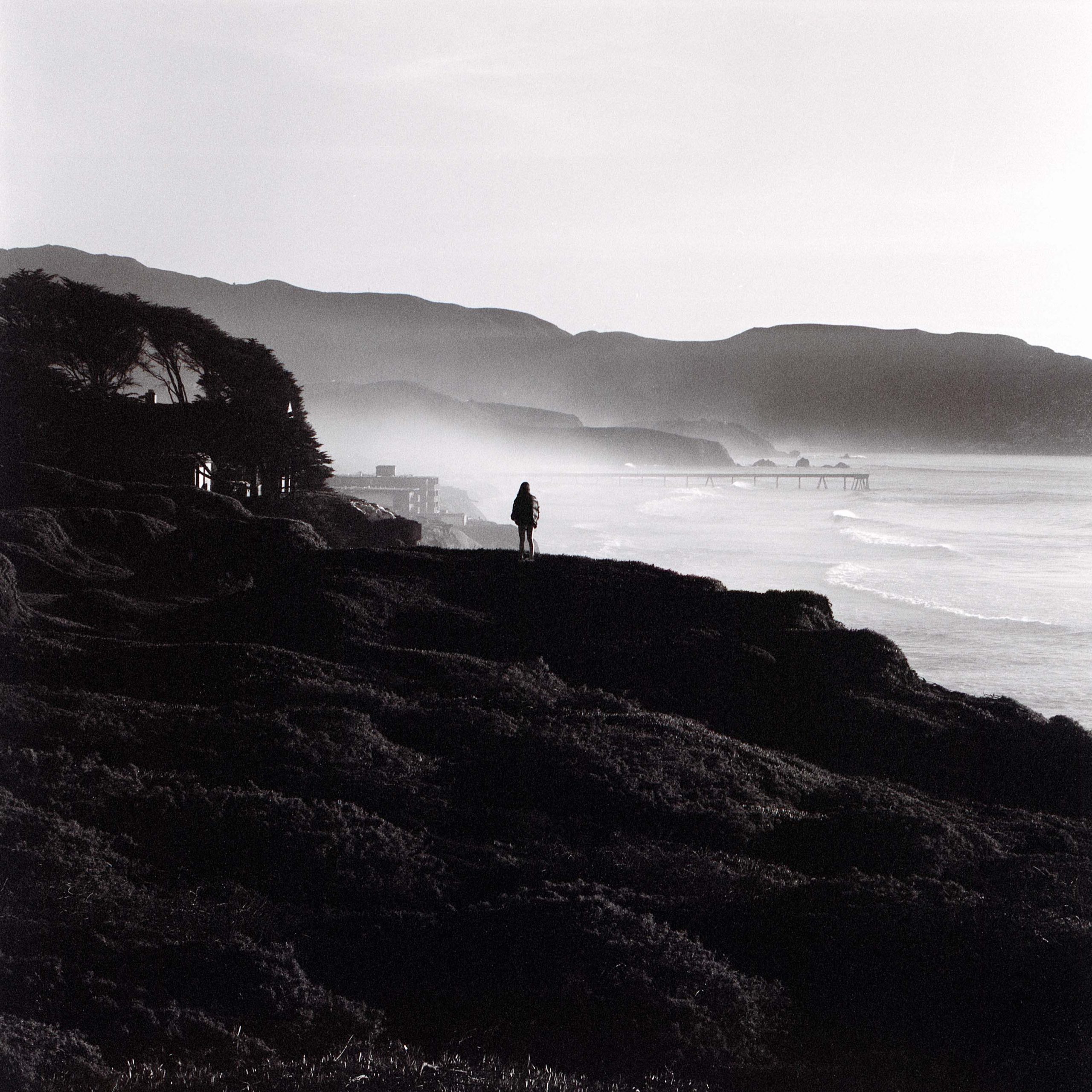
3 - Exploring the Themes at Play
Your work explores the “interplay of light and shadow” - Is there something about this interplay that resonates with you, both visually and emotionally?
Black and white photography strips everything down to this dance between light and shadow.
There’s such profound truth in that interplay – how you can’t have one without the other, how shadow helps define light and light gives meaning to shadow. It’s become a way of understanding life itself, seeing how every experience creates depth and meaning.
How do you choose your subjects or locations? Do you find that your surroundings reflect your inner state at the time of shooting? Do you feel your subjects choose you?
I don’t really choose at all. There’s this beautiful guidance that leads me exactly where I need to be.
Sometimes it’s a quiet street corner, other times it’s an open landscape. The images themselves ask to be captured – it’s more about being available to receive them than deciding what to photograph.
I have read in your own biography that you feel exploring human interaction with nature is at the core of your work. How has this theme evolved for you over time, and what do you hope people take away from it?
What began as documenting the visible relationships between people and their environment has evolved into something deeper – a way of witnessing how grace moves through both natural and built landscapes.
Through this practice, I’ve come to see how everything – nature, architecture, human presence – participates in one flowing conversation. It’s all part of our collective journey toward understanding and connection.
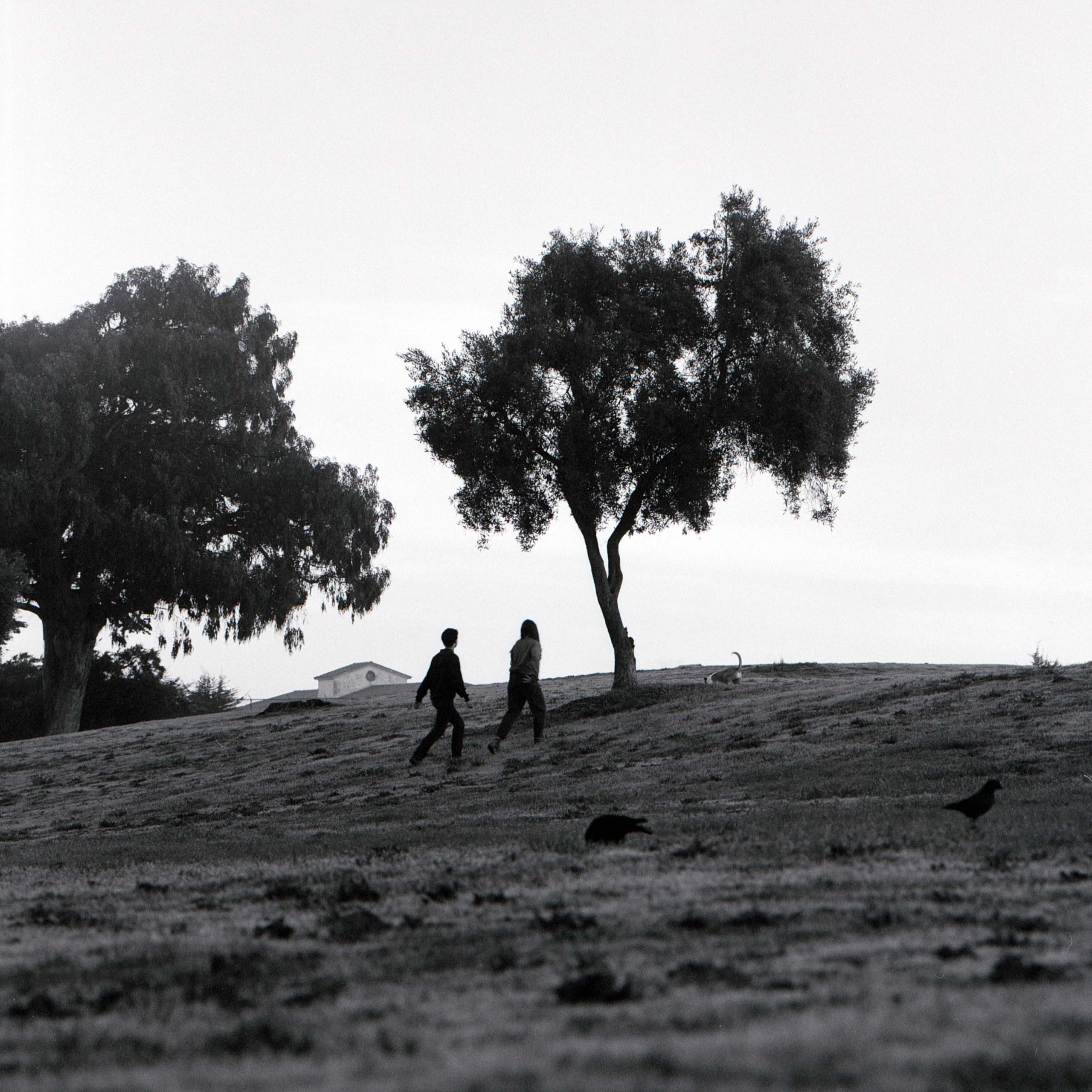
4 - Your Artistic Process
Your dedication to, and championing of, black and white film is inspiring. What do you find most rewarding about working in black and white?
Working in black and white creates a beautiful simplicity that allows truth to emerge more clearly.
Without the distraction of color, the essence of each moment becomes more apparent. It’s not about removing something from the image, but rather about creating space for deeper meaning to come through.
Do you think the absence of colour enhances your focus on any element of composition such as light, texture, mood, etc?
The absence of color creates a direct pathway to the fundamentals of seeing – the way light plays across a surface, how shadows define form, the subtle textures that might otherwise go unnoticed.
It strips away the obvious and reveals something more essential about each moment.
Do you think anything is lost in capturing in black and white? Alternatively, do you think something additional is found?
Nothing is lost – rather, something deeper is revealed. Black and white photography helps distill moments to their essence.
It’s like how poetry can sometimes express truth more clearly than prose. The limitation actually opens up new possibilities for seeing and understanding.
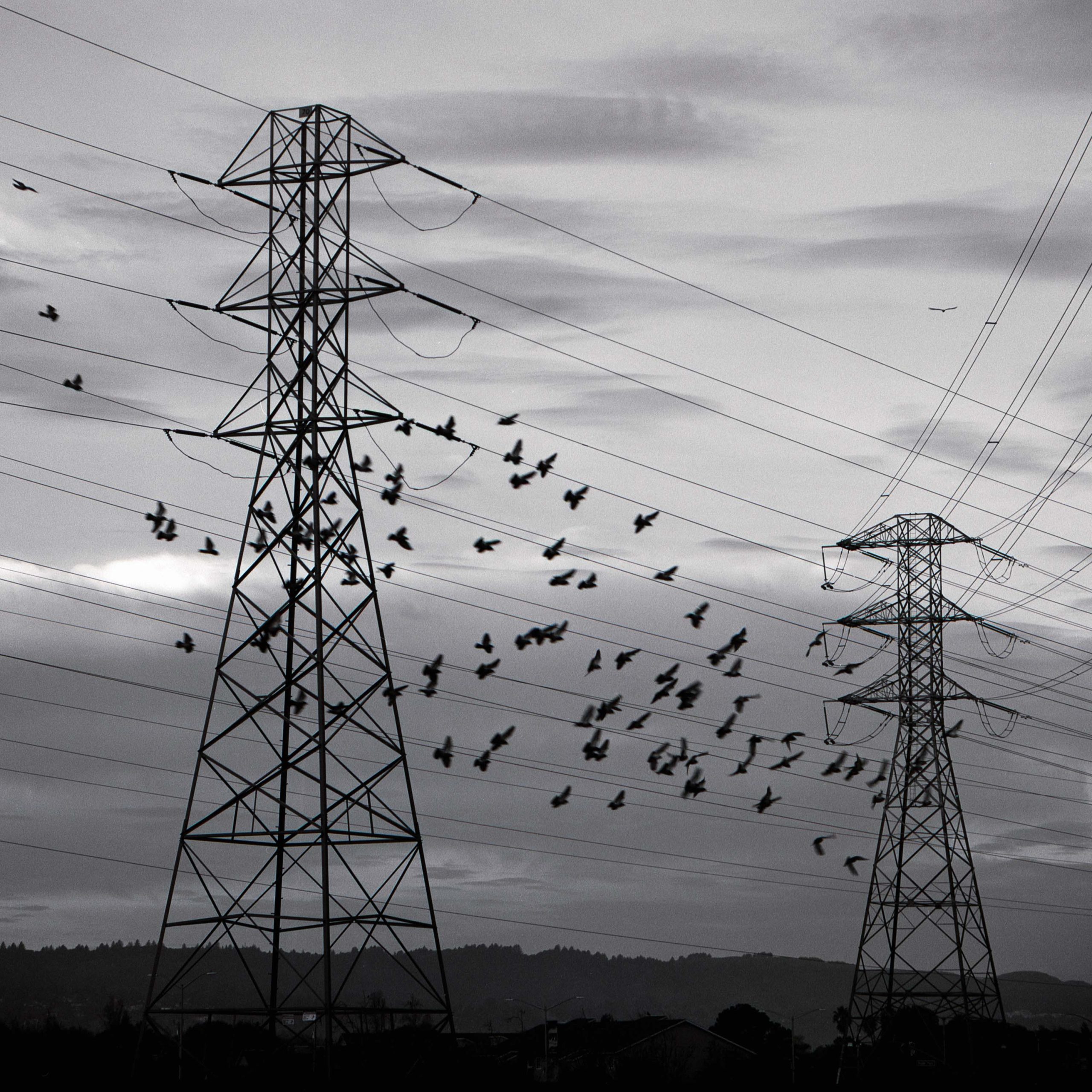
What role does patience play in your process, from choosing the right moment to shoot to developing your film?
Patience has taken on a different meaning now. It’s no longer about waiting for the right moment – it’s about surrendering to divine guidance.
When I trust this guidance completely, amazing scenes orchestrate themselves. The key lies in being patient enough to let grace work through you, to wait until you’re clearly shown what needs to be captured. It’s more about receptivity than traditional patience.
5 - Personal Struggles, Resilience, and Connection
I have previously described your writing as “haunting and personal” - often dealing with themes of real personal struggle, seeking out purpose and healing, an emergence of sorts from real darkness. Could you elaborate on how your own struggles have shaped your photography and artistic expression?
Life’s challenges have been profound teachers. Particularly losing my grandparents, and not being able to be with them during their passing, completely transformed my relationship with photography and writing.
These experiences weren’t punishment but preparation. They taught me to recognize pain in others, to offer light from a place of genuine understanding.
Can you talk a bit about your writing and photography as a dialogue? How do these two forms of expression inform each other? Do you write from photographs or photograph from writing? How do these expressions interact?
The writing and photographs come from the same source. Sometimes words arrive with an image, other times they come on their own.
I’ve learned not to question or analyze it too much. My role is simply to remain open and allow both forms to move through me in service of whatever needs to be expressed.
Do you feel that expressing this pain through your art helps engage a healing process? Has photography helped you navigate or reflect on these in a deeper way?
The practice itself has been transformative. What began as personal experience has opened into something much larger – a way of serving others through both images and words.
Every challenge has become preparation for deeper understanding and service.
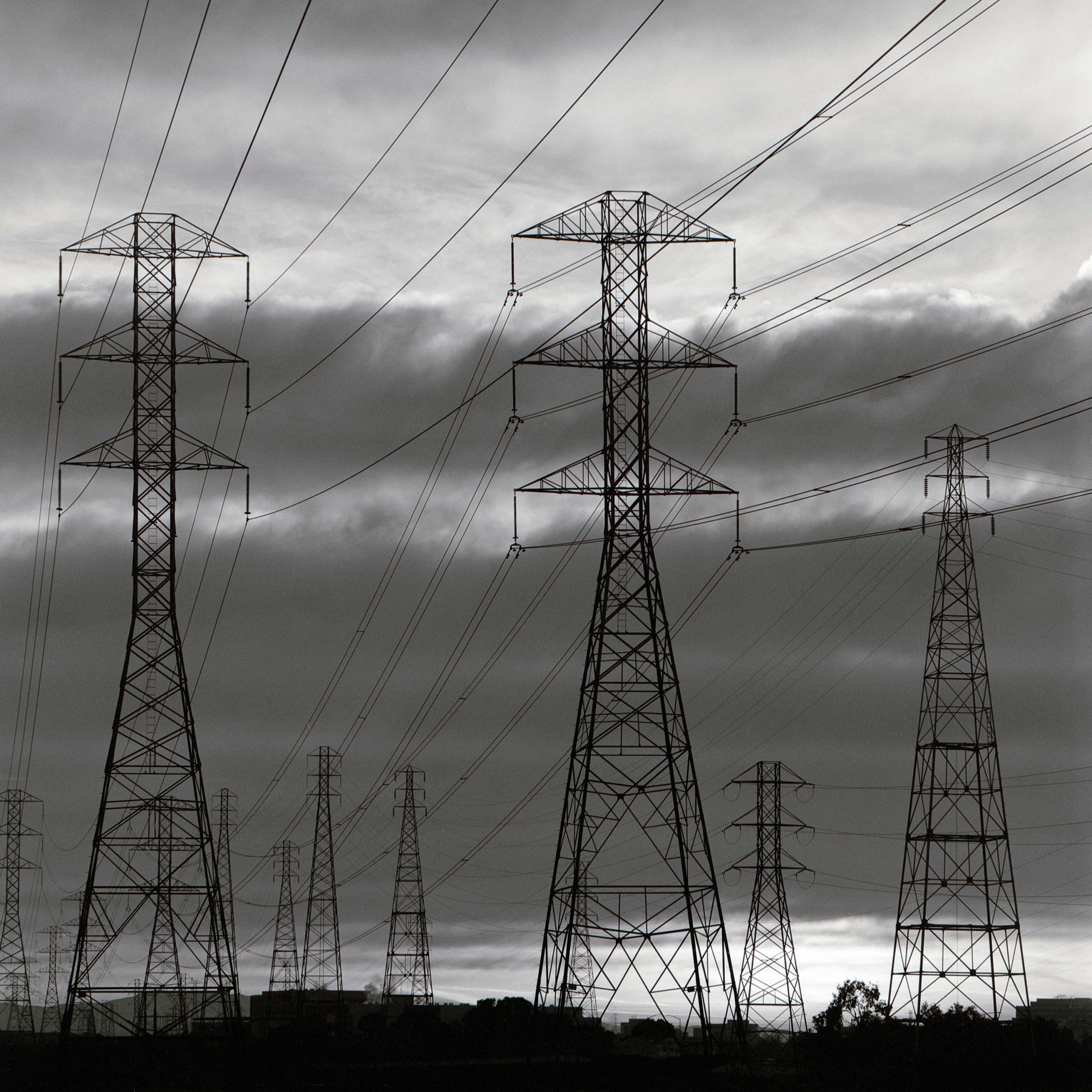
What role has photography played within the context of your journey to the US? Have you found your work has acted as a means to engage within this new community or overcome barriers faced when moving to a new environment?
Photography became my way of finding stillness in transition. Through these daily walks and moments of seeing, the Bay Area has become more than just a place – it’s woven itself into the fabric of my practice, into my way of being. These streets and hills have become intimate companions in this journey.
This practice has drawn beautiful souls into my path. Being an introvert, I find that true connection happens in those deeper spaces where hearts meet in genuine understanding.
How do you hope your work resonates with viewers on a personal or emotional level? What do you hope we take away from the experience of viewing your photography and reading your reflections?
I try not to have specific hopes about how people will receive the work. I trust that each image and word will find exactly who needs it, when they need it. The divine knows better than I do who needs what and when.
6 - The Future, Whatever That Means…
Looking back on your journey, what would you say are the most significant ways your relationship with photography has evolved?
The transformation has been profound, especially recently. What began as a simple love for photography transformed into something I never could have imagined.
Looking back, I’m in awe of how completely different my relationship with photography is now. It’s become a form of divine communion, a way of serving others through both photographs and words.
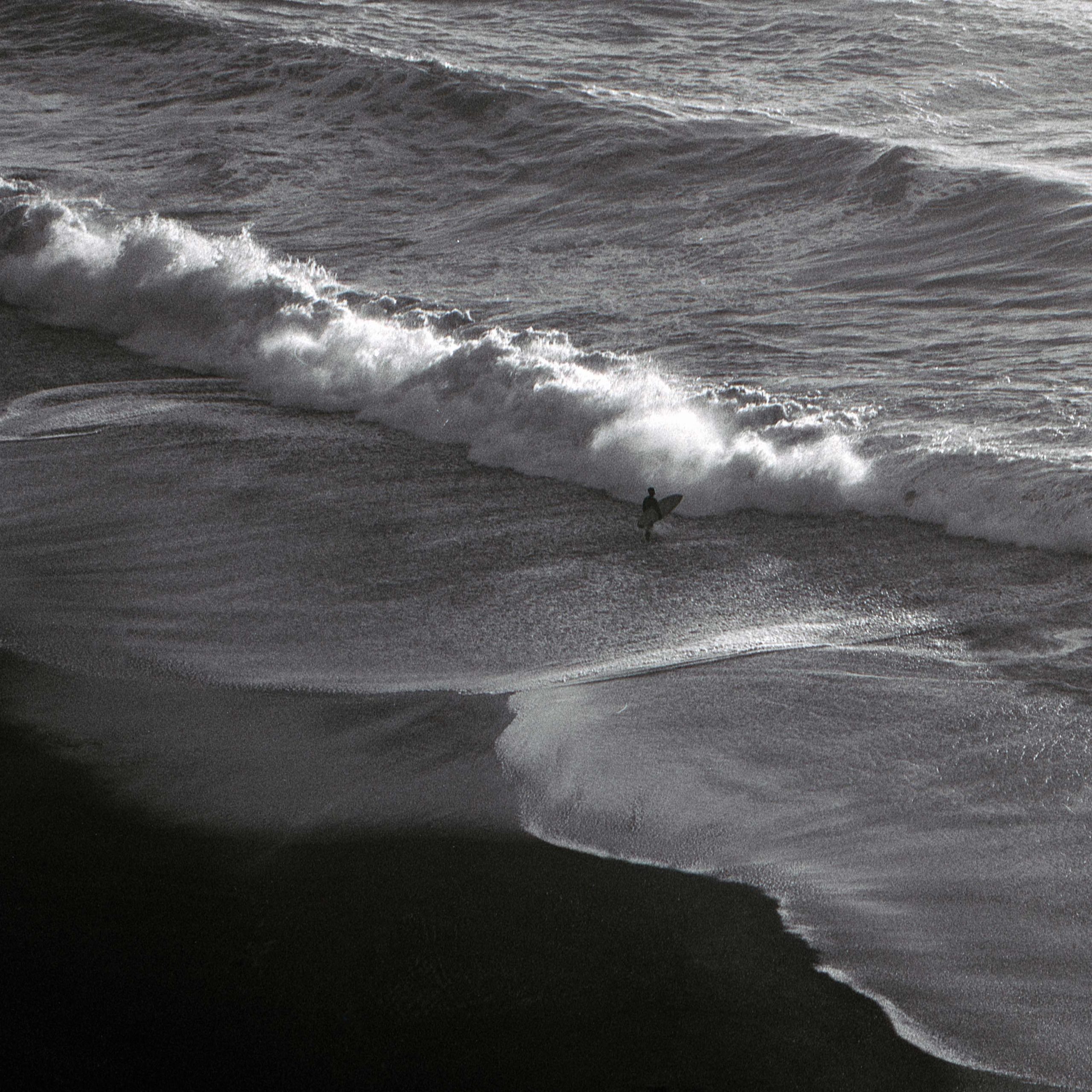
Do you have future projects or themes you’d like to explore in your photography or writing?
I don’t really plan projects anymore. I’ve learned to trust the guidance that moves through me. Each day brings what needs to be expressed. Right now, I’m working on a book that came through in the same way – not something I planned, but something I was led to share.
What advice would you give to photographers who are just beginning their own creative journeys, especially those who want to find deeper meaning in their work?
Stay true to what genuinely calls to you. Whatever practice speaks to your heart, approach it with dedication and openness. Allow it to teach you, to shape you. You might be surprised where it leads.
Fred Ostrovskis-Wilkes
I am a photographer, writer and design agency founder based in Sheffield, UK.